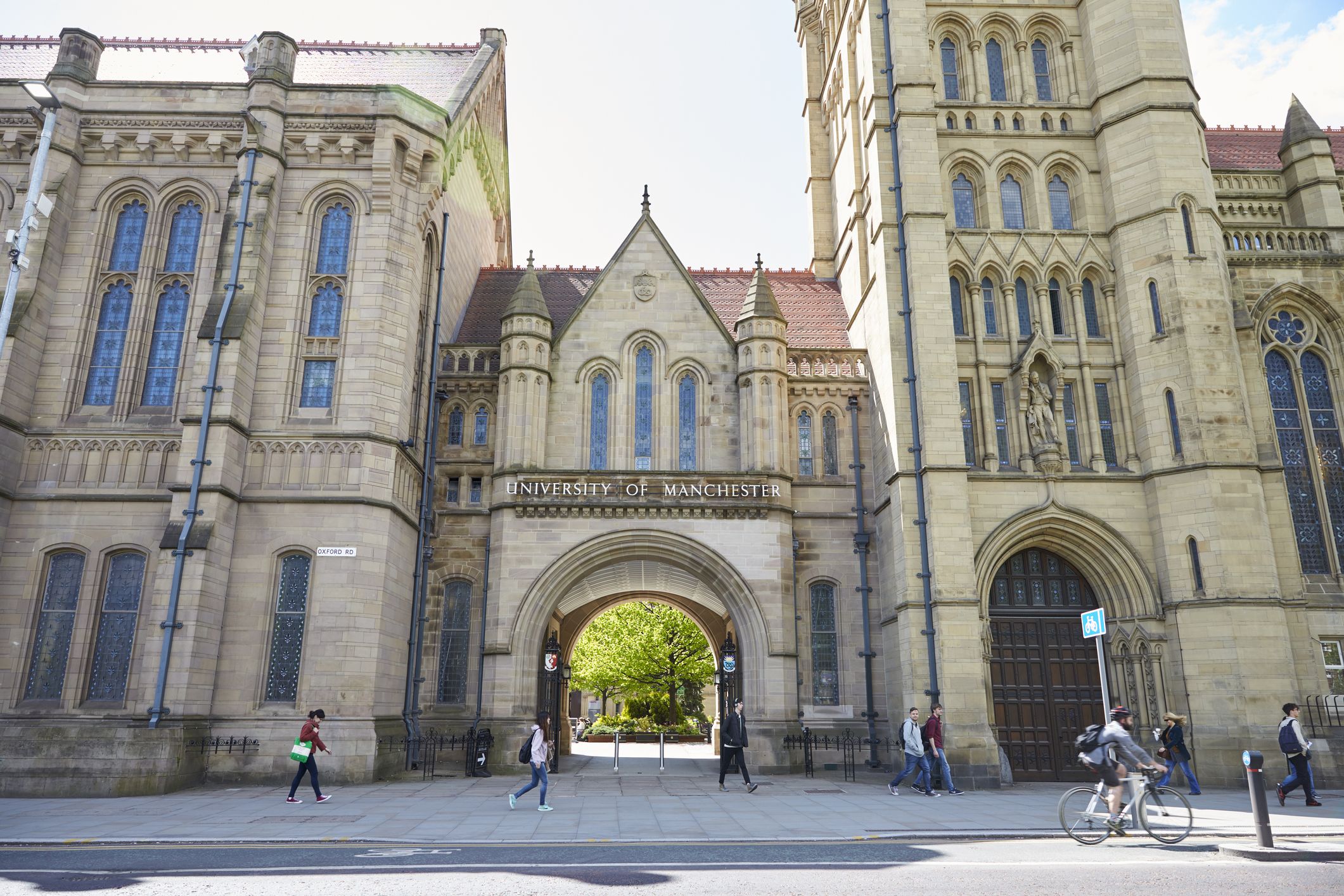#CountdownToCOP26

As the UK prepares to host the COP26 climate negotiations in November, academics from across The University of Manchester have been identifying the priorities and challenges policymakers need to tackle in the fight against climate change. In this collection, we present a year's worth of insight and expertise on climate policy, with recommendations to both national and international policymakers.
From the feasibility of carbon capture and hydrogen, to the role of nuclear power in net zero, and the socio-economic implications of a 'green recovery' from COVID-19, researchers at Manchester can speak to a broad spectrum of issues related to global warming. This collection, collating blogs in the #CountdownToCOP26 series from Policy@Manchester, is only a small taste of the depth of knowledge on offer at the University.
Policy@Manchester
Advanced nuclear energy for Net Zero: A strategy for action
Professor Francis Livens, Dalton Nuclear Institute
June 2021
The UK has committed to a net zero 2050 target, but what place does nuclear energy have in meeting this ambition? In this blog, Professor Francis Livens from the Dalton Nuclear Institute outlines the recommendations of a new roadmap for the UK’s nuclear sector, including its role in hydrogen production, and what steps are needed to make the UK a key-player in the next generation of nuclear reactors.
- There is a role for nuclear power in meeting the UK’s net zero targets, but policymakers must move quickly to implement it.
- Advanced nuclear reactors could be used to cleanly produce hydrogen fuel for use in other hard-to-decarbonise sectors.
- With clear leadership, the UK has the potential to be a global hub in advanced reactor production and fuel recycling.
Last year’s Energy White Paper set out a very stark challenge for the UK’s nuclear sector– ‘show that you can play a safe, economic part in helping reach our net zero ambitions, and you have a future; fail to do so, and you don’t’. Net zero, and particularly the potential role of hydrogen in achieving it, has been the subject of much discussion recently, and our recent position paper, Nuclear energy for net zero: a strategy for action, specifically explores the relationship between nuclear energy and hydrogen.
The first point to make is that Net Zero is a massive challenge – electricity production, where the UK has made good progress with decarbonisation, is only about 20% of total UK energy demand, and complete replacement of carbon fuels requires enormous change in the whole energy system. The White Paper starts to recognise this and spells out possible roles for renewables, gas with carbon capture and storage, and nuclear, but the reality is that the scale of the problem is so huge that the UK has to explore all these options. Indeed, as the report was in the final stages of preparation, EDF announced their decision not to re-start the Dungeness B nuclear plant in Kent. Whilst it was never credible or intended that Dungeness B would remain in operation until 2050, this decision makes the challenge of continual progress in UK emissions reduction all the harder in the coming years.
As these technologies become better understood, their significance may change, and ruling out potentially useful options would hinder progress unnecessarily. The UK must urgently develop the ability to compare honestly and objectively different technologies, both nuclear and non-nuclear, across their whole life cycle.
Nuclear Power and hydrogen
Hydrogen is attractive for the decarbonisation of some energy sectors where electric power is unsuitable, and could have a large role in the decarbonisation of transport, industry, and domestic heating. Electrolysis (using electricity to split water into hydrogen and oxygen) is one route. The better established electrolysis processes are, however, pretty inefficient and expensive, particularly if you are switching your plant between electricity generation when demand is high and hydrogen production when there is an electricity surplus. Although conventional nuclear energy is optimised for the production of electricity, advanced nuclear reactors, which can produce much higher temperatures than the 300°C or so of conventional ones, have a unique attraction since you can avoid the inefficiencies of electricity generation and, instead, use the reactor heat to drive processes like thermal decomposition of water directly, which is much more efficient than electrolysis. To develop this radical option, we need clear leadership and a strong focus on the feasibility of these technologies, followed by rapid development if they do turn out to have a part to play.
Delivering
Time is critically short. You do not demonstrate a nuclear technology, license it and deploy it quickly, so if advanced nuclear is to play a part, development needs to start now, to give enough time to demonstrate it for rapid deployment by the early 2030s. The very recent opening up of the regulatory assessment process to advanced nuclear technologies is a welcome first step. Nonetheless, this compressed timescale severely limits our choice of nuclear technology and we conclude that only the High Temperature Gas-cooled Reactor (HTGR) is a realistic option, not least because there is the possibility of international collaboration to speed things up. Delivering this requires consistent leadership and commitment comparable to that shown in the fusion arena by the UKAEA.
HTGR technology uses different fuels from conventional reactors and, although the UK actually has quite a good understanding of HTGR fuel, it needs to be able to manage and operate the whole fuel cycle. In particular, HTGR fuel is unlikely to be recycled, even though only around 1% of the total energy potential of the fuel is used. While the economics of recycling nuclear fuel are unfavourable at present, fuel recycling might be something the UK wants to do in the second half of this century if the world goes nuclear in a big way.
There are, however, major challenges in deploying HTGRs. High operating temperatures stress the reactor materials so there is a tension between seeking ever higher temperatures and the design challenges, particularly in materials selection and performance. Beyond these technical issues, HTGRs will also be deployed in new ways, potentially close to towns and cities, or major industrial plants, or collocated with hydrogen production facilities. The societal and regulatory aspects of using nuclear energy in this way are likely to be some of the most difficult aspects of deployment.
The opportunity
HTGRs, with hydrogen, could be game-changing, or could be an irrelevance, and the UK needs to answer this question honestly and urgently. Government needs to have access to competent advice, not just on nuclear energy, but on all aspects of the energy system and, in the case of HTGRs, there is an urgent need for evaluation and a decision.
If HTGRs have a part to play, then the relative immaturity of the technology actually presents an opportunity for the UK. Building maybe tens of HTGRs in the UK is a strong foundation for a UK industry – the country has the R&D base, can make fuel, and has the chance to reinvigorate the high quality manufacturing needed, all capabilities currently focused in NW England and North Wales. While the potential impact of HTGR has not been quantified, the proposed and complementary UK SMR programme, which is comparable in scale, is estimated to offer as many as 40,000 high quality jobs.
The UK needs to move fast to resolve the question of whether or not it is willing to go forward with HTGRs and hydrogen, and if so, to take any opportunity which is there. If it continues to prevaricate, any opportunity will certainly be lost.
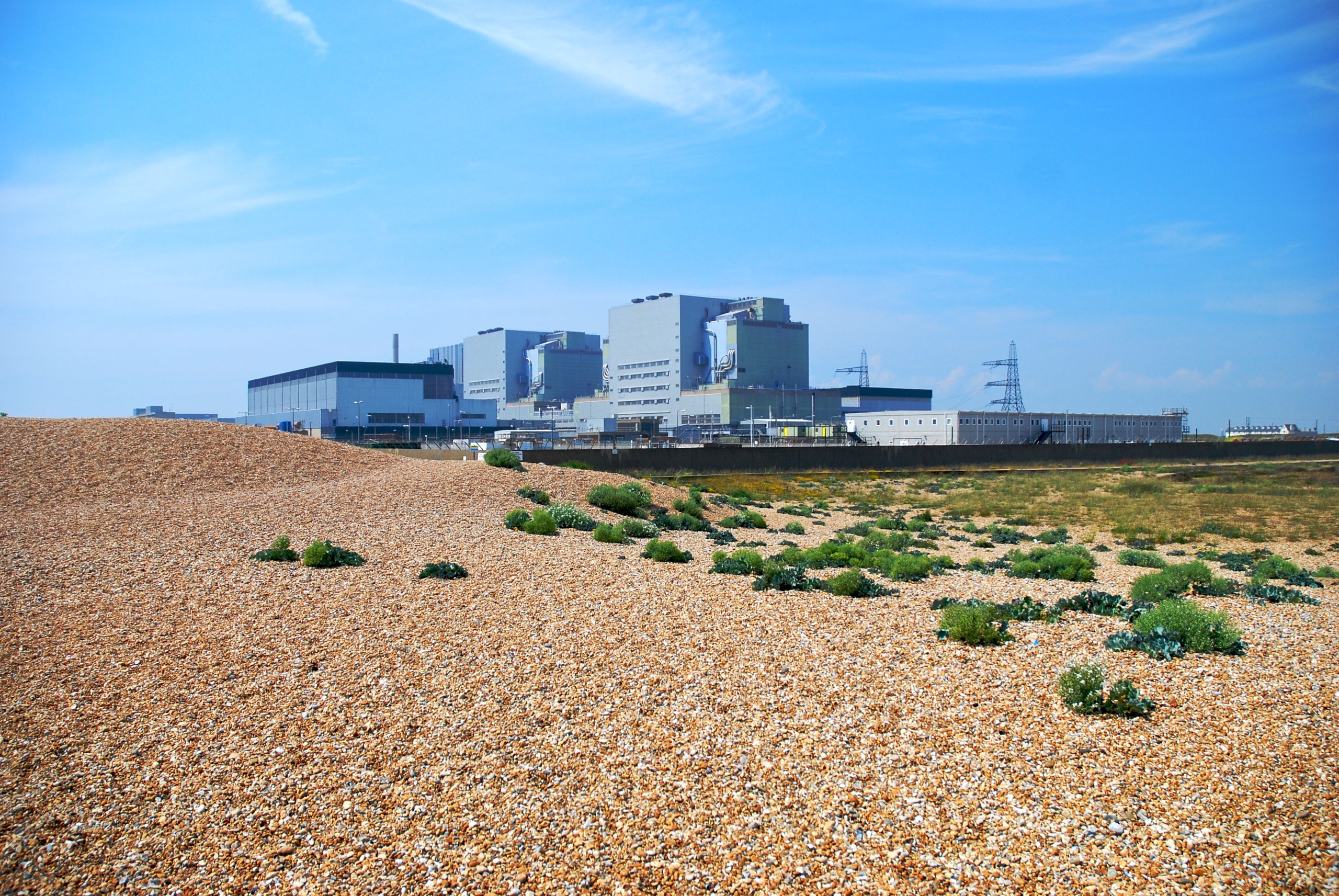


The 2020 Energy White Paper- Is nuclear power back?
Professor Francis Livens, Dalton Nuclear Institute
December 2020
The long-awaited Energy White Paper, Powering Our Net Zero Future, sets out an ambitious pathway to decarbonisation of the UK. It maps out many possible scenarios, with nuclear energy ranging from an irrelevance to a major contributor. Here, Professor Francis Livens from the Dalton Nuclear Institute, looks at what needs to happen in order for nuclear energy to play a significant role in decarbonisation of the UK energy systems.
- The new White Paper aims to confirm investment for ‘at least one large-scale nuclear project’ by the end of this Parliament.
- This minimum contribution from nuclear energy is entirely achievable with our current technology
- But to make a significant difference to the transformation of our energy system, advanced fission and fusion technologies would need to be deployed.
- To reach the top end of the envisaged contribution, new technology will need to be developed and made commercially viable, deployment needs to be on a large scale and the combination of these two things will be extremely demanding on a traditionally conservative nuclear sector.
Although its first planned publication date was 18 months and two Secretaries of State ago, the Energy White Paper finally emerged on 14 December. While many of its key points were highlighted in last month’s Ten Point Plan, the White Paper seeks to set out the UK’s path to net zero.
The shifts in our energy mix and the associated technological and societal transformations envisaged here will be radical. Large scale replacement of fossil fuels will more or less double electricity demand, and the accompanying shift to low carbon generation will lead, overall, to about a four-fold increase in clean generation. New energy technologies such as energy storage, advanced nuclear fission, nuclear fusion, carbon capture and storage, or use of hydrogen as a fuel, will need to be deployed on a large scale, which brings significant uncertainty.
‘Net Zero by 2050’ is therefore not a matter of choosing this technology or that; it is such a far-reaching change that we need to pursue all options at this stage. Within this uncertain landscape, it is clear that wind and solar will make a large and immediate contribution, but their intermittency has to be compensated by large scale energy storage, hydrogen-fuelled generation, nuclear power, or gas generation with carbon capture. The range of potential contributions to the energy mix is therefore wide:
- Gas with carbon capture and storage 2- 30 GW
- Offshore wind 40 – 120 GW
- Onshore wind 15 – 60 GW
- Solar 15 – 120 GW
- Nuclear 5 – 40 GW
The nuclear contribution
The White Paper very much conforms with the proposition of the Nuclear Innovation and Research Advisory Board (NIRAB), that nuclear fission technologies can be deployed in waves, with each offering greater contributions to decarbonisation. The first comprises large, conventional Pressurised Water Reactors (PWRs), similar to those being built at Hinkley C and proposed for Sizewell C, which produce 1.0 to 1.6 GW each. The second and third waves of nuclear fission reactors offer the prospect of avoiding the difficulties of large PWRs and also open up new decarbonisation options. Smaller, factory-built ‘modular’ designs should allow lower capital costs and quicker construction, with major effects on lifetime costs- the cost of capital is by far the largest single contribution to the cost of electricity from large PWRs, and the White Paper talks about ways in which Government can reduce this cost. ‘Small modular’ PWRs, potentially the second wave, are based on a well established technology. For example, Rolls-Royce, who lead the project, say the first UK small modular reactors (SMR), which produce 440 MW, could be deployed in 10 years, with a build rate of two per year after that. There are many different candidate reactor concepts in the third wave, ‘Advanced Modular’ reactors. Some are quite well established, with prototypes and demonstrators having been built in the past. Others are still very much ‘Powerpoint Reactors’. The White Paper recognises the potential of SMR and advanced modular reactors (AMR), and offers the prospect of a substantial £385 million ‘Advanced Nuclear Fund’ to explore their potential.
A future for fusion?
Nuclear fusion is seen as a potential contributor. The White Paper explicitly sets out the aim to “build a commercially viable fusion power plant by 2040”. The UK Atomic Energy Authority’s (UKAEA) Spherical Tokamak for Energy Production (STEP) aims to build a prototype 100 MW fusion power plant by “around 2040” – but this is not even at the concept stage yet, and a call out just this month for communities to apply to be the host site. As with the more advanced fission reactors, STEP could offer options to produce electricity, hydrogen or synthetic fuels. The UK Government is already supporting the early stages of STEP’s development, with a £220 million fund announced in October 2019.
For all these grand aspirations, the White Paper actually sets out few firm deliverables for the nuclear contribution to the energy mix. The objectives set out in the White Paper are to bring at least one large nuclear project, presumably Sizewell C, to its Final Investment Decision (so still maybe 10 years from generation) by 2024, and also deliver STEP by 2040. And that’s it. If Hinkley C and Sizewell C are the only nuclear projects completed, this would, deliver about 6 GW, at the bottom of the potential range for a nuclear contribution. If Rolls-Royce deliver the UK SMR as they hope, that gives another 7 GW. AMRs and fusion reactors are much further away but, if all goes well, might yield another 5 GW in the 2040s, for a respectable total nuclear contribution of 18 GW by 2050.
Highly ambitious?
The 40 GW top end of the nuclear contribution starts to look extremely ambitious. Continuing production of UK SMRs at the rate of two per year after the initial 16 would give another 24 by 2050, which is 11 GW. Large scale nuclear build could be continued as well. The gap between the Hinkley C and Sizewell C is likely to be about 10 years – assuming that was reduced there would be the potential to generate another 10 GW by the 2050 target – just about achieving the 40 GW ambition.
To sum up, the bottom end of the target contribution for nuclear looks entirely achievable with the current technology available, but, if that is all we do, nuclear will pretty much be an irrelevance to achieving the overall net zero targets. Delivering the top end of the range requires new technologies, new ways of deployment, new uses of nuclear energy, all delivered for less money and in less time. That’s quite a stretching target for a historically conservative sector. This White Paper sounds very much like a gauntlet hitting the floor…

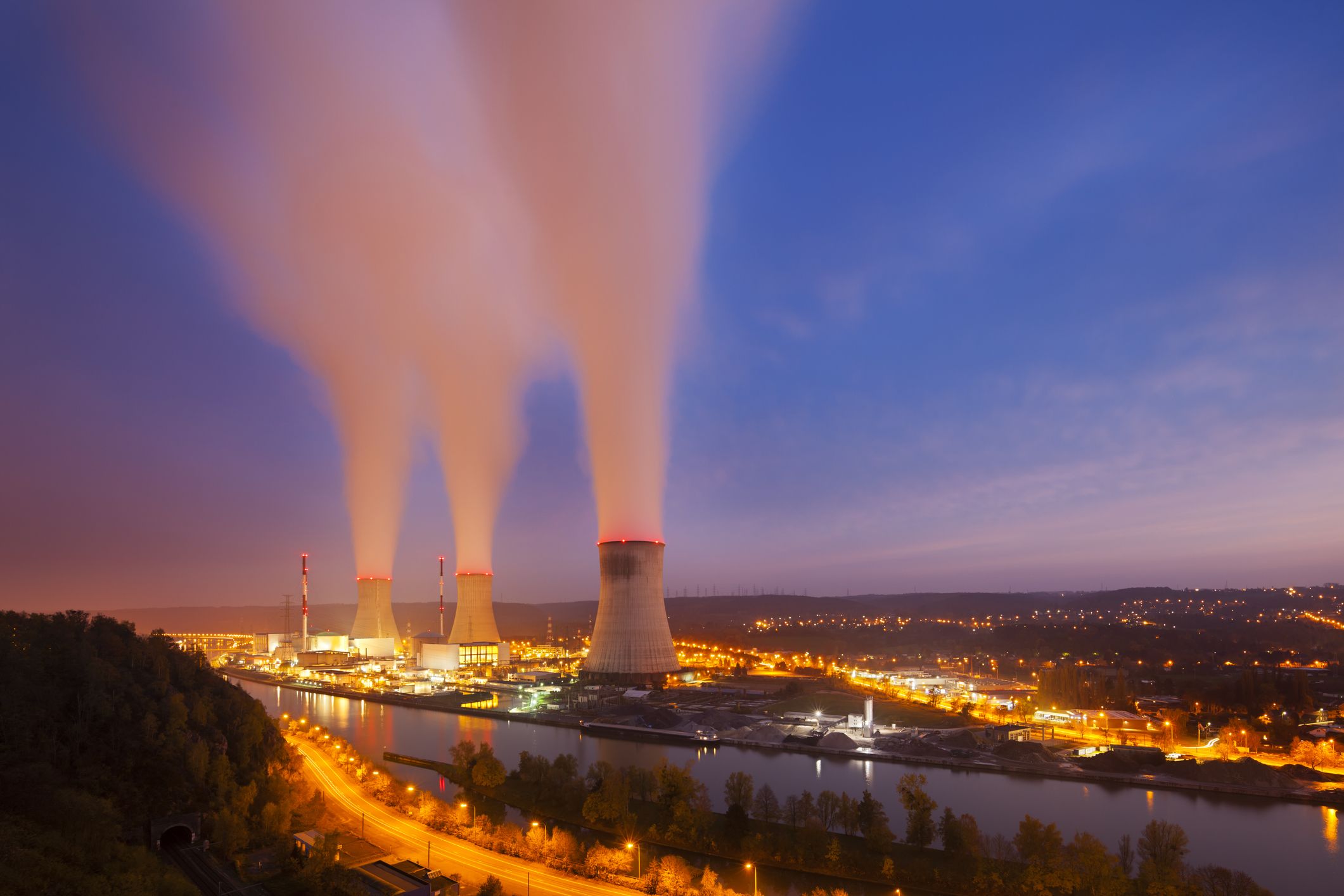

COVID-19 and sustainable everyday routines
Dr Claire Hoolohan, Tyndall Centre Manchester
October 2020
Climate change requires rapid and fundamental transformation of our society to change the way that resources like energy and water are used during everyday routines. However, unsustainable consumption proves surprisingly impervious to policies and interventions intended to reduce emissions, not least because taken-for-granted ways of living become ‘locked-in’ by cultural and material conditions of society. Here, Dr Claire Hoolohan outlines some of the ways COVID-19 has forced experimentation in our everyday routines, the effect this has had on sustainable practices, and how policymakers can seize the opportunity for positive action.
- COVID-19 has disrupted previously ‘locked-in’ practices, such as commuting, working, shopping and cooking
- In turn, this has created possibilities for different – potentially more sustainable – routines to arise and reduce resource use in the home
- Policymakers must ensure that as we adapt to living with COVID-19 sustainable routines are supported, consolidated and normalized, rather than pursuing a return to normal that resumes unsustainable practices
When a practice becomes ‘locked-in’, it means that people’s capacity to act in different ways is limited, despite perhaps understanding the implications of their actions and even hen supportive of change. Often, the cultural and material conditions in which routines are situated are satisfactory, which leads to little critical reflection. The more people that participate in unsustainable practices, and the more regularly they do so, the stronger the lock-in effect becomes.
In contrast, COVID-19 has caused unprecedented disruption to everyday life, prompting a period of forced experimentation as people in all kinds of different situations adjust to new ways of living. The changes have been extensive, rapid, and unexpected – affecting the way we work, socialise, care for others, exercise and entertain ourselves.
Research from The University of Manchester, as part of the ESRC Centre for Climate Change and Social Transformation, explores the impact of COVID-19 on the UK public’s lifestyles and routines, focusing on activities that have significant impacts on climate change (eg, travel, food, product consumption, and energy use). Unsurprisingly, the results show that people’s everyday routines have changed in many ways during this time, and some of these changes are to the benefit of sustainable consumption.
For example, we asked people about how their shopping, cooking and eating routines had changed. Respondents described how restrictions have led to more time at home and less spontaneity in cooking and eating. As a result, people are better able to keep track of what is in the fridge and what needs using, resulting in 35% of respondents reporting less food waste and an increase in waste-reducing practices like batch-cooking, freezing and preserving food.
There are also references to the idea that in a world with coronavirus, food waste equates to risk, as it means more journeys to the supermarket where people are concerned about transmission.
These findings signal the importance of systemic factors such as timetabling and scheduling, and wider trends that have become engrained throughout the 20th Century, like commuting. Several respondents described how their shopping habits had changed because they no longer travelled to and from work:
“Previously we would do small quick shopping trips every 1 or 2 days, to pick small stuff up at lunchtime or on the way home from work. We can’t do this anymore as we’re not in the office, so we’ve been doing one big shop and buying more to reduce the number of trips. We plan really carefully now so that we don’t waste anything, because going to the shop risks our health and the health of others.”
Here we see how shopping, meal planning and food waste become entangled in working and commuting, and how pre-COVID habits become unsettled as lockdown disrupted daily routines. These sorts of findings are interesting if we reflect on other emissions hotspots, like rush-hour and peak energy demand. Shifting the timing of energy demand provides a range of benefits, from reducing local air pollution to balancing the grid and enabling more widespread use of more intermittent forms of renewable energy.
Many of the common approaches taken to ‘time-shift’ routines focus on individual action – time-of-use tariffs and smart displays to encourage people to use energy ‘off-peak’. Yet few strategies are being rolled out to alter the broader time-space of daily routines. COVID-19 has given us a window to observe what happens when ordinary schedules – 9-5 work day, the school run, weekdays/weekends – are suspended. Working from home and having children out of school has done away with many of the more formal structures that people typically experience. And as a result, many respondents in this survey talk about how they’ve begun to experimenting with different ways of structuring their time.
For flexible workers who previously stuck to a 9-5 working day, the shift to working from home, often combined with a need to care for children, has led to great variety in how people are flexing their usual commitments – some taking longer days with breaks, or working earlier or later. There are also plenty of people describing how they switch between shorter, more concentrated ’shifts’ of work and childcare, alternating with their partner.
“As before, I usually work a 7-8 hour day, but now I usually take breaks amounting to 2-3 hours during the day, to do other activities, so I start earlier and work into the evening. I’ve found this more do-able than sitting for a 7-8 hour continuous stretch.”
This seemingly mundane resequencing of daily activities, if continued, could deliver the time-shift needed to redistribute peak energy demand. An important question then, is how, as a society, we can recover from coronavirus in a way that continues to allow space for the low-carbon habits that this survey has observed.
One line of enquiry is to reimagine employment, and potentially schooling, to benefit demand management and perhaps also wellbeing, given that people seem to appreciate having greater control over their time. For some years people have discussed the possibility that shorter working days and weeks might have benefits for sustainability and wellbeing. However, it has been difficult to gather the evidence of the impacts of such a change at a large scale and across different industries/communities. COVID-19 has forced that experimentation, and what we see in the results is that there does indeed appear to be evidence that supports the case for experimenting with different temporal rhythms.
However, it is important to recognise that for some people this time has been deeply difficult. People are concerned about their loss of productivity, they’re worried that they’re not able to do their best for dependents whilst also juggling work, and many have first-hand experience of coronavirus itself. If policy is to support experimentation with working hours, this needs to be done in an empathetic way that recognises different people’s situations and needs, and works to ensure this is an experience that does not benefit/disadvantage certain groups more than others.
Bold demand management measures are needed if the rapid and extensive reductions needed to limit the negative impacts of climate change are to be achieved. COVID-19 has forced extensive experimentation as people adapt everyday routines to new circumstances, and the early results from this research illustrate major implications of this experimentation for the ways in which resources such as water and energy are used, and how people eat and travel. Coronavirus has therefore created an important set of conditions within which to understand discontinuity in everyday practice at a large scale.
This research is undertaken as part of the ESRC Centre for Climate Change and Social Transformation, seeking to understand from past and present examples how and why social transformation have occurred. More findings from this project can be read here. The research will be continued to understand the enduring impacts of lockdown on everyday routines, and to contribute to the Everyday Life in a Pandemic project, and international sociological study to explore the implications of COVID-19 on everyday practices around the world.



Tackling the twin crises of COVID-19 and climate change
Professor Alice Larkin, Tyndall Centre Manchester
November 2020
The global pandemic of 2020 has meant massive changes to millions of people around the world. But as we look to adjust to life in the ‘new normal’, are there lessons to learn in how we can ‘build back better’? With less than a year to go until the postponed COP26, Professor Alice Larkin from the Tyndall Centre for Climate Change Research gives her recommendations as to how we can tackle both the recovery from COVID-19 and the climate change crisis. (This blog was originally recorded as part of COVID Catalyst, a series which saw experts from across The University of Manchester come together to identify the new challenges and innovation needed to build back better following the pandemic.)
- The global pandemic has shown us that change can happen very quickly in response to an emergency.
- The response to the COVID-19 crisis can also be used to help address the ongoing climate emergency.
- Analysis of global emissions during the spring lockdowns reveals an average global reduction of 17%. But while our lives were temporarily transformed, our reliance on fossil fuels remains.
Clever investment now, at this pivotal point that has been brought about not only by COVID-19, but also the underlying attention on the climate emergency from the climate movement, could positively transform systems and society away from fossil fuels, while simultaneously improving employment, equality and human well-being.
We’ve learnt two important lessons so far from the pandemic. The first is that our priorities can shift dramatically to tackle an emergency. The second is that change can take place quickly.
I’d like to share how these observations can be harnessed to tackle the climate emergency because, with everything going on in the world right now, you’d be forgiven for forgetting that we’re in one.
I’ve spent the last 18 years trying to understand the scale of the climate emergency and how our energy systems should transform to minimise carbon emissions. ‘Energy systems’ can sound rather technical but what I mean is how you and I use energy every day. What we use it for, when we use it, how much we use and where it comes from.
The climate emergency we’re facing is so great that mitigating the damage we are doing now, and the damage that will be done in future, requires much more than just increasing the amount of renewable electricity on our National Grid. We need to consider all the ways that we consume energy: from travelling to heating our homes, cooking to the industrial manufacture of goods; and critically, we need to do this quickly.
This is why it’s not just about technology. We know that a wide variety of technical solutions exist for cutting CO2 emissions, but some will take decades to be sufficiently widespread to make the difference that is actually needed in the next five or ten years. Coming from an physical sciences background and spending most of my career working with engineers and social scientists, I know that modelling theoretically how an idealised technology such as Bioenergy with Carbon Capture and Storage might cut CO2, is very different to the more complicated process of widescale and rapid infrastructure deployment. I’m thinking of things like the construction of new nuclear power stations; retrofitting alternative technologies for heating every single UK home; designing and deploying an extensive network of electric vehicles charging points; and perhaps most importantly in the current debate – the large scale roll-out of new CO2 removal technologies.
That’s why it matters how much energy we consume. If we can consume less, then we won’t need to transform as much high carbon infrastructure – but this is rarely the focus of CO2 mitigation discussions.
Consuming less energy has previously taken a back seat in the policy debates to decarbonising our energy supply. One of the reasons for this is that it requires changes to individual and collective behaviour, attitudes and expectations; aspects that are seemingly more politically sensitive than a shift in technology.
For example, I’ve worked for years on cutting the CO2 from air travel but the appetite for reducing flights, or even just curbing growth rates, has been minimal despite the widespread understanding that decarbonising aviation will take longer than the time we have to meet our Paris Climate Agreement objectives.
Yet consumption shifts can be implemented now. For example, research from The University of Manchester in June of this year analysed shipping emissions and the impact policy interventions could have when applied to existing vessels. Our research revealed that without making changes to energy consumption now, by adopting slower speeds or retrofitting ships with energy saving measures such as modern sails, the shipping sector will be unable to meet Paris targets, even assuming new vessels are able to run on zero-carbon fuels from 2030. Essentially, our research showed that it is vital to apply measures to decarbonise shipping within existing infrastructures to achieve milestone reductions while, simultaneously, developing new transformative technologies.
So, with just under twelve months until COP26 begins, what have we learnt from our response to COVID-19 to inform how we can respond to the climate change crisis? How can we equip our Government to deliver the UK’s defining action on climate change?
We’ve learnt that people can work and live differently. We can accept less commuting, less flying, less buying material goods; all energy consuming activities. We’ve accepted these changes because we know that there is a threat to human society.
We now need to apply that learning to our twin crises. Lockdown has shown that when leaders unite in recognition of a shared crisis, we adapt. This indicates that if the same leadership approach was taken to the climate emergency, we would accept changes that specifically reduce energy consumption, and supports the huge investment required in low-carbon infrastructure.
We’ve also learnt that we need more than a temporary change in our levels of energy consumption to combat climate change. Analysis of global emissions during the spring lockdowns reveals an average global reduction of 17%. However, this analysis also shows that even if some restrictions remain in place to the end of 2020, as they are likely to, the overall reduction will be much less. This indicates that while our lives were temporarily transformed, our reliance on fossil fuels remains. To ‘build back better’ we need structural and societal change that is sustained, far-reaching, and increased to meaningfully tackle the climate emergency.
To achieve this, we need significant investment. This brings me to a third matter we’ve learnt: we know that when the crisis is big enough, investment can be found. We now need investment to reflect the scale of the climate crisis. We need decision makers to direct investment, that we know can be made available, to drive rapid and radical regional and national interventions.
Clever investment now, at this crucial pivot point that has been brought about not only by COVID-19, but also the underlying attention on the climate emergency from the climate movement, could positively transform systems and society away from fossil fuels, whilst simultaneously improving employment, equality and human well-being. To support climate change goals we will need to retrofit our entire housing stock which in turn helps to address fuel poverty, re-purpose our roads for cycling and walking – improving our air quality, and accelerate our renewable energy roll-out. All these green projects create more jobs, while delivering short term returns for society that avoid long-term damage that will come at a high cost.
Now is the time to ‘green’ society and pursue a future that considers local prosperity, jobs, resilience and equality as we reassemble our daily lives.
Not only has COVID-19 given us lessons that we can learn from, but it has also created a flux in our everyday routines. We need decision makers to take advantage of this flux to develop policies that can lead to sustained but acceptable reductions in energy consumption – focusing on delivering change in the near term.
If we don’t take advantage of this moment in time where we have demonstrated that society can accept deep change, then we will pass up our opportunity of a lifetime to help future generations.
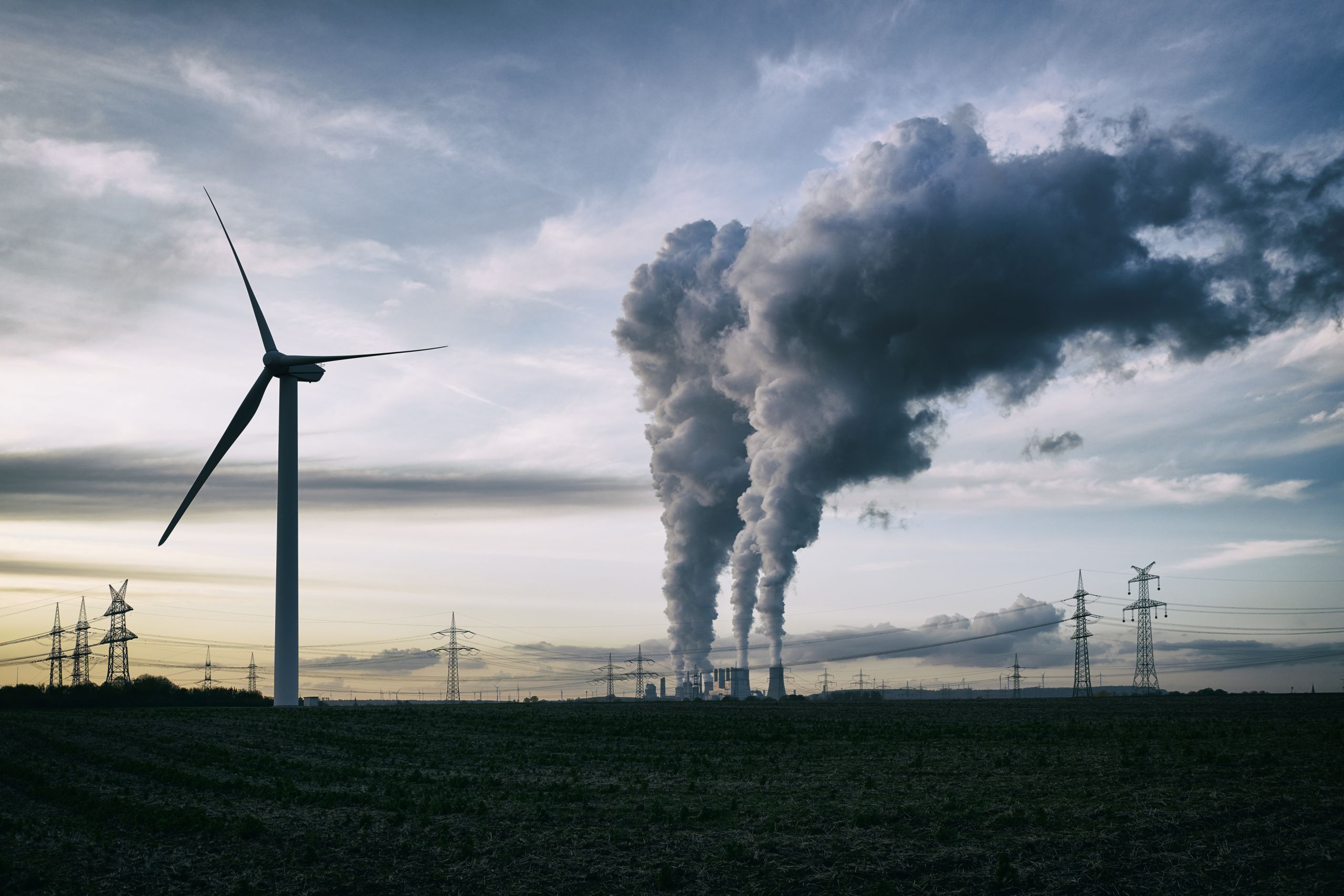


Turning climate change ambitions to reality
Dr Sarah Mander, Tyndall Centre Manchester
December 2020
The UK Government has announced both its aim to cut emissions by 68% by the end of 2030 and its Ten Point Plan for a Green Industrial Revolution, seeking to provide a blueprint to allow the UK “to forge ahead with eradicating its contribution to climate change by 2050”. Here, Dr Sarah Mander from the Tyndall Centre for Climate Change Research, considers the details needed to take these plans from ambition to reality.
- The ambitions demonstrate the UK’s commitment to fight the climate crisis. Applied successfully, they are key to building back better.
- The detail is lacking and this threatens to cause further delay in adopting much needed decarbonisation strategies.
- Some elements of the Ten Point Plan, are not yet actionable as either rely on long-term technology solutions or depend on government-led business models or skills development programmes
- However, there is existing expertise and practices that could make a difference almost immediately: in the shipping sector, in the domestic and industrial heat market, and in the approach to sub-national innovation. These should be prioritised to enable emission reductions now.
Five years on from the 2015 Paris Climate Change Agreement and one year until COP26, the government’s recent announcements, to cut emissions by 68% by 2030 and the Ten Point Plan, set ambitions both necessary and welcomed.
However, the devil is in the detail, and details are currently missing. For many points within the Ten Point Plan, the lack of detail threatens continued paralysis. For example, progress on carbon capture technology remains delayed as we wait for long-promised clarity on business models, while the additional £200 million funding, promised again last week, takes us back to the levels of funding first promised in 2010. Similarly, the much-needed plans to transform domestic heating require a UK-wide training programme to avoid the bottleneck we’ve seen in retro-fitting, and ensure trade-supply both matches domestic-demand and supports a green jobs recovery.
The problem is, the scale of the climate emergency is so significant we don’t have the luxury of time. We need to quickly decarbonise our energy consumption, from how we heat our homes to how we travel and fuel the manufacture of goods.
This is where three specific points in the Ten Point Plan can be accelerated if we expand the limited detail to include, and prioritise, practices that we know will either reduce emissions now, or allow for seamless implementation when the technology is ready.
Take for example, shipping and aviation. The Ten Point Plan aims to support “difficult-to-decarbonise industries to become greener through research projects for zero-emission planes and ships”. However, if we look beyond ‘Jet Zero’ technology and consider known approaches to reduce energy consumption, we have the potential to significantly decarbonise the industry. Tyndall Manchester research, published in June, demonstrated that without adopting slower speeds and retrofitting ships with energy saving measures such as modern sails, the shipping sector could not meet Paris targets, even assuming new vessels are able to run on zero-carbon fuels from 2030. We cannot wait for zero-carbon fuels to be developed and remain within our carbon budgets. However, by applying measures to decarbonise shipping within existing infrastructures, the research showed we can achieve milestone reductions, while simultaneously developing new transformative technologies.
Secondly, hydrogen. Domestic and industrial heat are responsible for approximately a third of UK emissions, and there are a number of technological approaches through which it can be decarbonised. Switching from natural gas to low-carbon hydrogen is a proposed approach. However, the need for significant amounts of zero-carbon hydrogen aside, the public must be brought on board, with the recent UK Climate Assemblies suggesting that hydrogen is less popular than other approaches to decarbonise domestic heating. Its report revealed only 20% strongly agreed that hydrogen should be a part of how the UK gets to net zero, compared to 31% for heat networks and 34% for heat pumps.
Through our research on establishing a social license for carbon capture, we know that public engagement is critical to the successful introduction of technologies that impact local populations and where that support is lacking, as was the case for fracking deployment, can attract huge opposition. Therefore, it’s crucial that when it comes to hydrogen, investment is split: research into generation; with money and time set aside to design and deliver the processes to engage the public. Without the latter, the former is moot.
Finally, in regards to innovation and finance, the government sets out a desire to “develop the cutting-edge technologies needed to reach these new energy ambitions and make the City of London the global centre of green finance”. This is an exciting ambition but while that’s all being mapped out, accurate carbon accounting, applied at a local level, can deliver significant impact now. The UK’s expertise in carbon accounting, as seen in research undertaken for West Midlands Combined Authority (WMCA), empowers local authorities to apply measures within existing infrastructure. With regions like Greater Manchester under pressure to make year on year emission reductions of 15% to stay within its carbon budget, carbon counting is a viable solution to achieving targets now, rather than relying on large-scale, long-term technological innovation set out within the UK Government’s Ten Point Plan.
The welcomed ambition of the government demonstrates the UK’s commitment to fight the climate crisis. Delivering on that commitment requires immediate action. It’s important that we should recognise that some of the ten points are not yet actionable. While long-term technology solutions are researched, in the short-term, new business models need to be trialled and tested, and skills training must be provided at scale.
We have learned two things from the COVID-19 crisis: firstly, we can move quickly when we need to; and secondly, we need to build back better. By making a commitment to greening our society, and applying measures we know to work, now, we can reduce carbon emissions, while ensuring future resilience, local prosperity, ‘levelling-up’ through job creation and societal equality.


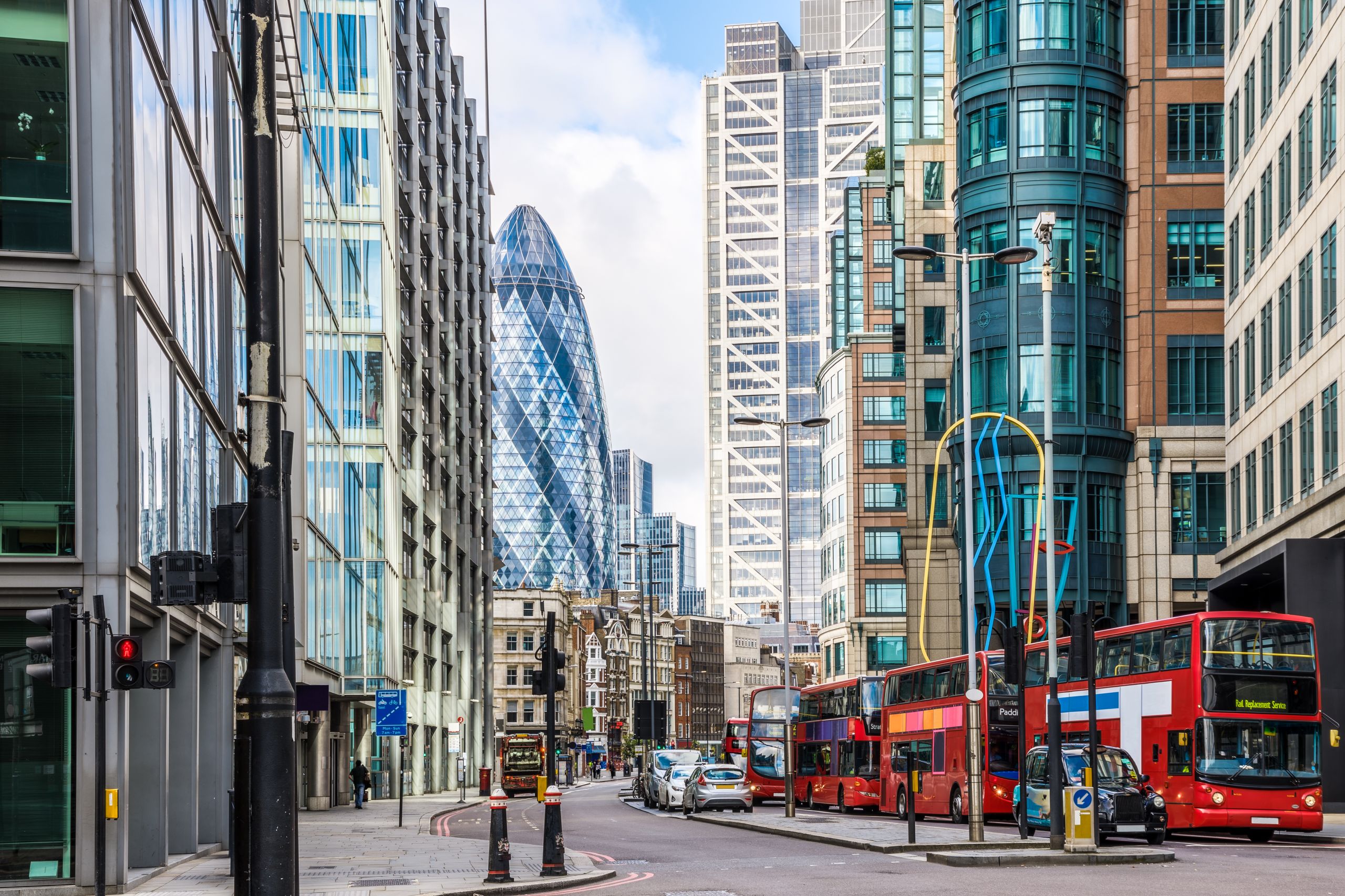
Rise to the top: Socially responsible public procurement
Sandra Hamilton, Manchester Institute of Innovation Research
October 2020
Amidst the social and economic challenges of a post-Brexit, post-COVID landscape, public procurement is gaining increased visibility and legitimacy as a policy tool. Effective 1 January 2021, the UK is positioned to become the first nation in the world to mandate that taxpayer-funded contracts are fully leveraged to maximise social value. A minimum 10% weighting will be required in the evaluation of social value in UK central government contracts. As the UK seeks to negotiate international trade agreements with the EU, USA, Canada, Australia, New Zealand and others, how value is defined in government procurement and the question of whether or not sub-national public procurement should be included in future trade agreements is the subject of increased debate. In this blog, Sandra G. Hamilton, from the Manchester Institute of Innovation Research, outlines recent changes to UK public procurement and argues that to rebuild a more inclusive, socially sustainable post-COVID economy, similar changes now need to be made at a global level.
- As of January 2021, the UK will be the first nation to mandate a minimum 10% social value weighting be applied to taxpayer-funded central government contracts.
- Concern regarding the lack of practical implementation in advancing responsible public procurement at the central government level in OECD countries is rising.
- The WTO-Government Procurement Agreement must also be revised, moving beyond voluntary language to explicitly mandate the inclusion and evaluation of social and environmental criteria in taxpayer-funded contracts.
In practice, public procurement remains overly commoditised, more of a price-taker than a market-shaper. A 2018 survey found that only 55% of OECD central governments had adopted a strategy or policy to leverage public procurement to stimulate responsible business conduct. Today, socially responsible public procurement leadership is found primarily at the city level, and there is valid concern about the lack of practical implementation occurring within the central governments of OECD countries.
In 2015, Manchester City Council mandated a 20% social value weighting in its own procurement, rising to 30% earlier this year. In the UK’s quest to transform public procurement from a transactional low-bid culture into a strategic policy mechanism, many innovative practices and policies of leading sub-national public actors have helped inform the new UK model. This new development builds upon the UK’s 2012 leadership in passing the UK Social Value Act, which required the UK public sector to consider the inclusion of social value. The move from voluntary to the mandatory inclusion of social criteria represents a very positive step forward and marks an important development in the evolution of socially responsible public procurement at the central government level.
How does socially responsible public procurement work?
Socially responsible public procurement (SRPP) involves proactively leveraging taxpayer funded contracts to align and support high priority government policy objectives. Typically, this involves moving beyond an over focus on low bid, to also evaluate proponents on non-financial socially beneficial outcomes, such as the bidders’ level of commitment to addressing a societal problems, by providing employment and skills development opportunities for equity-seeking groups and individuals facing barriers to employment.
The UK has adopted a big tent, very broad approach to advancing social value through procurement, recognising that all vendors, irrespective of size or ownership type, can compete based on their ability to generate incremental social value in core operations and throughout their own supply chains. This helps to advance the dialogue regarding socially responsible public procurement beyond the important, but niche, topics of social enterprise development (such as in Australia and Canada) and supply-chain diversity based upon certification of a firm’s ownership being female, FAIRTRADE, BAME, Indigenous or LGBTQ (as in USA, Canada, New Zealand and Australia).
The UK’s whole of government approach has been designed to better align with today’s societal values; to foster socially responsible competition across the whole supply chain, irrespective of a firm’s ownership. It is a flexible approach, which sets a minimum, but not a maximum social value weighting; a policy approach designed to stimulate and reward rise-to-the-top responsible market actors, over race-to-the-bottom bidders. In addition to employment and skills development, there are other specific policy outcomes, including:
- helping communities to manage and recover from the impact of COVID-19;
- improving supply-chain resiliency;
- improving access for small and medium enterprises (SMEs), the voluntary, community and social enterprise sector , and mutuals;
- reducing greenhouse gas emissions and improving workplace conditions to support social distancing, remote working and sustainable travel solutions.
The five priority themes as defined in the UK Government’s social value procurement policy note are:
- COVID-19 recovery
- Tackling economic inequality
- Fighting climate change
- Equal opportunity
- Wellbeing
Welcoming the new rules, UK Cabinet Office Minister, Julia Lopez said: “Government has tremendous buying power, spending £49bn each year on contracts for vital public services. Value to the taxpayer should lie at the heart of our procurement decisions. Too often, however, ‘value’ has been narrowly defined by price without taking into account other important factors such as the number of local jobs or apprenticeships a contractor will provide, the care they show the environment in their business practices or the number of SMEs involved in their wider supply chain.”
A new phenomenon?
While socially responsible public procurement is often viewed as a new phenomenon, history tells us otherwise. In fact, leveraging public procurement to improve working conditions and social outcomes dates back to 1840, suggesting that the low bid culture of the last forty years represents the anomaly. In 1840, US President Martin Van Buren issued an executive order establishing the 10-hour working day for all those working under certain government contracts; in 1914, the UK and USA introduced special contract arrangements to provide employment for disabled WWI veterans; and the 1931 Davis Bacon Act (USA) mandated the payment of local prevailing wages on government contracts. By 1949, governments understood the risk of large low-bid government contracts depressing local wages. To mitigate this risk and to promote good governance ILO C94 – the International Labour Organization Convention No. 94 – was adopted. ILO C94 provides an early example of a socially responsible approach to supranational governance, requiring bidders and contractors to align themselves with the locally established prevailing pay and other working conditions as determined by law or collective bargaining. As of September 2008, 58 member states were bound by ILO Convention No. 94.
In the early 1980s, during a period dominated by Anglo-American neoliberal politics, globalisation and laissez faire economics, the focus became small government, increased outsourcing, Free Trade and GDP growth. In 1982, the UK abolished Fair Wage legislation and became the only member state to withdraw and denounce ILO C94. Today, as the UK suffers unprecedented levels of regional inequality, when compared to other advanced economies and West Wales is recognised as one of the poorest regions in Northern Europe, the UK government has launched a ‘levelling up’ regional economic development agenda and recognised that how governments define value in taxpayer-funded contracts matters.
Aligning the supranational policy landscape with UK’s move to mandatory
To address the 21st Century Grand Challenges of poverty, racial and gender inequality and climate change, it is time to revise the text of the WTO Government Procurement Agreement (GPA) to explicitly require the mandatory inclusion of both social and environment criteria. Originally designed in 1994 as a market opening economic mechanism, signatories to the GPA took over ten years to modernise the text to incorporate environmental criteria. As long as the WTO-GPA remains silent on social value criteria and makes its approach to green procurement voluntary, the supranational regulatory landscape risks falling increasingly behind, failing to deliver the public sector leadership needed to shape a more inclusive and socially just economic recovery from COVID-19.
Governments are the largest buyers of goods, services, and public works, accounting an average of 12% GDP in OECD countries, amounting to a spend of some six trillion EUR per year. The WTO-GPA signatories were slow to embed green criteria in the revised 2012 text and have been slower still to explicitly embrace social value considerations. Public sentiment and political will are changing. The ESG (environmental, social and governance) focus has quickly shifted from E to S and the UK has raised the bar. Other OECD governments can and must do more to advance UN Sustainable Development Goal 12.7, sustainable public procurement, which remains an under-utilised policy tool.



Why the success of a green recovery requires engaging with – and learning from – minority communities
Dr Sherilyn MacGregor and Dr Nafhesa Ali, Sustainable Consumption Institute
April 2021
Although the UK has world-leading net zero targets, simply setting the target is not enough. Achieving it requires the participation of all sectors of society. However, racialized minority communities are underrepresented in mainstream approaches to achieving environmental sustainability. To redress this marginalization, Dr Sherilyn MacGregor and Dr Nafhesa Ali from the Sustainable Consumption Institute explain how policymakers should do more to engage with a wider selection of communities to work together for the common good.
- If the UK is to ‘build back better’, and successfully address the other global crisis we face – climate change – then an urgent rethinking of how minority communities are involved in policy debates is needed.
- This means having more inclusive environmental policy processes, ensuring that there are spaces for learning from, and listening to, a diversity of groups as well as actively challenging racist assumptions.
- Activism, advocacy and creative, budget-conscious strategies are needed at local level.
The collision of the climate and COVID-19 crises has prompted demands for deep social and economic change to ‘build back better’, so that a livable world is possible for current and future generations. Success, however, will be limited, unless as many citizens as possible are included and involved in shaping the green recovery agenda.
Calling for a more inclusive approach to sustainability is not the same as saying ‘we’re all in the same boat’. In fact, a starting premise of our research is that the field of environmentalism is exclusive and not enough is being done to question its middle-class whiteness. The ideas of ‘sustainable consumption’ and ‘green lifestyles’ come from affluent, white majority societies in the Global North that have both caused and benefited from unsustainable resource use. Applied in often benign and apolitical ways, they are concepts that obscure structural inequalities while often failing to resonate with marginalised groups.
Our question is, how can racialized minority communities in general, and immigrants from lower income countries in the Global South specifically, be included in the collective movement to build a more just, livable and low carbon society in the UK? What are the barriers to, and benefits of, a more inclusive approach to sustainability?
Firstly, more needs to be done to recognise the relationship between climate change and racial injustice. The pandemic has highlighted the harm caused by the marginalisation of minority and immigrant communities in terms of health and low-paid, but essential, work. The dominant approach to climate change ignores the impacts of colonialism within UK society as well as the relevance of diasporic cultures and experiences. Moreover, it ignores the fact that it tends to be the privileged white population that is centred as knowledgeable actors and change agents. The argument that groups like The Climate Reframe project and the newly formed Union of Justice are making is that to really build back better we need to promote the contribution and experiences of ‘people of colour’, and to do this from the perspectives of racialised communities themselves.
Secondly, we need to channel this recognition of injustice towards challenging assumptions that are embedded in UK environmental policy. One problematic policy frame in need of review is ‘behaviour change’. Although usually well-meaning, it inevitably stems from a deficit view of individuals: the idea that average people lack knowledge about the climate crisis and simply need more education in order to live more environmentally responsibly. Research in environmental sociology has long discredited this assumption, but it lives on in every corner of UK policy-making. When it is coupled with racism, there is the dangerous assumption that certain groups are more deficient if ‘they don’t speak English’ or have not yet ‘assimilated’ to a British way of life, which may then play into a view that minority communities are ‘hard to reach’ or less interested in sustainability than the white majority. Positioning these communities in this way is not only wrong, but also creates and sustains views that lack of engagement is caused by a problem with ‘them’ rather than a failure of policy.
Lastly, we need to find (better) ways of listening to and learning from minority communities, especially those who have moved to the UK from the Global South. Through our ‘Towards Inclusive Environmental Sustainabilities’ project, we are working with members of the Pakistani and Somali communities across Greater Manchester who have immigrated in the past decade. A Manchester City Council Report (2015, p. 15) highlights that a large number of residents born outside the UK are from Pakistan, totaling 19% of the population. The report further adds that the Black African group has also grown rapidly over the last decade, particularly as a result of immigration from countries such as Somalia.
When we started the research with Somali residents in Moss Side we were met with reticence: ‘why are you asking us?’ And then came the response that ‘no one has ever asked us about this’. So far, we have found that water conservation, food waste, accessing local organic food, and recycling are issues Somali-origin residents are concerned about. They are passionate about the environment and concerned about conserving resources, which stems from their Islamic beliefs. We learned that they are just as concerned about the quality of their local environment as British-born residents.
People who have moved from a low-income country such as Somalia to a more affluent part of the world are in a unique position. On the one hand, they have experience of living with limited resources and know what adaption for survival involves. On the other hand, their lifestyles have contributed very little to the drivers of climate change. Yet policies that call for climate mitigation via changing consumption behaviour do not differentiate between these uniquely-positioned residents and the UK-born population. This means that policy messages can lack resonance for them, and their valuable knowledge may be ignored.
More can and should be done at the city level to develop a more inclusive approach to sustainability than currently exists in Manchester and other cities that are pursuing an ambitious green agenda. A list of ideas is set out and explained in our 2019 report (available in English and Somali).
A starting point is reducing obstacles to inclusive public engagement, and we think the local level holds the most promise for effective action. Of course, local governments lack resources to provide bespoke services for lots of different kinds of communities, even more so after the pandemic. Therefore, change will require councils finding opportunities for doing more with less as well as empowering local activism and advocacy.
One easy ‘win’ is to make public events more welcoming to the Muslim community , such as working with mosques to have culturally appropriate meetings. Additionally, there should be creative ways to conduct events and produce materials in more languages than English. Why not work with universities or language schools for mutual benefit? Beyond that, local authorities can use budgets to fund the creation of public spaces that encourage diverse residents to interact in common care for each other and their environment. Moss Side is a success story for grassroots groups like Upping It and the Moss Side Eco-Squad who make the struggle for better environmental quality part of the local identity.
The process of building back from the COVID crisis should involve a blend of net zero and social justice goals. It won’t be better if it isn’t radically different from what existed before. Unless we prioritise strategies for redressing the marginalisation of minority communities, we risk perpetuating the perception of the green recovery as an exclusive white middle class agenda, rather than for the common good.
Find out more about Dr Sherilyn MacGregor and Dr Nafhesa Ali’s current research project, Towards Inclusive Environmental Sustainability (TIES) here.
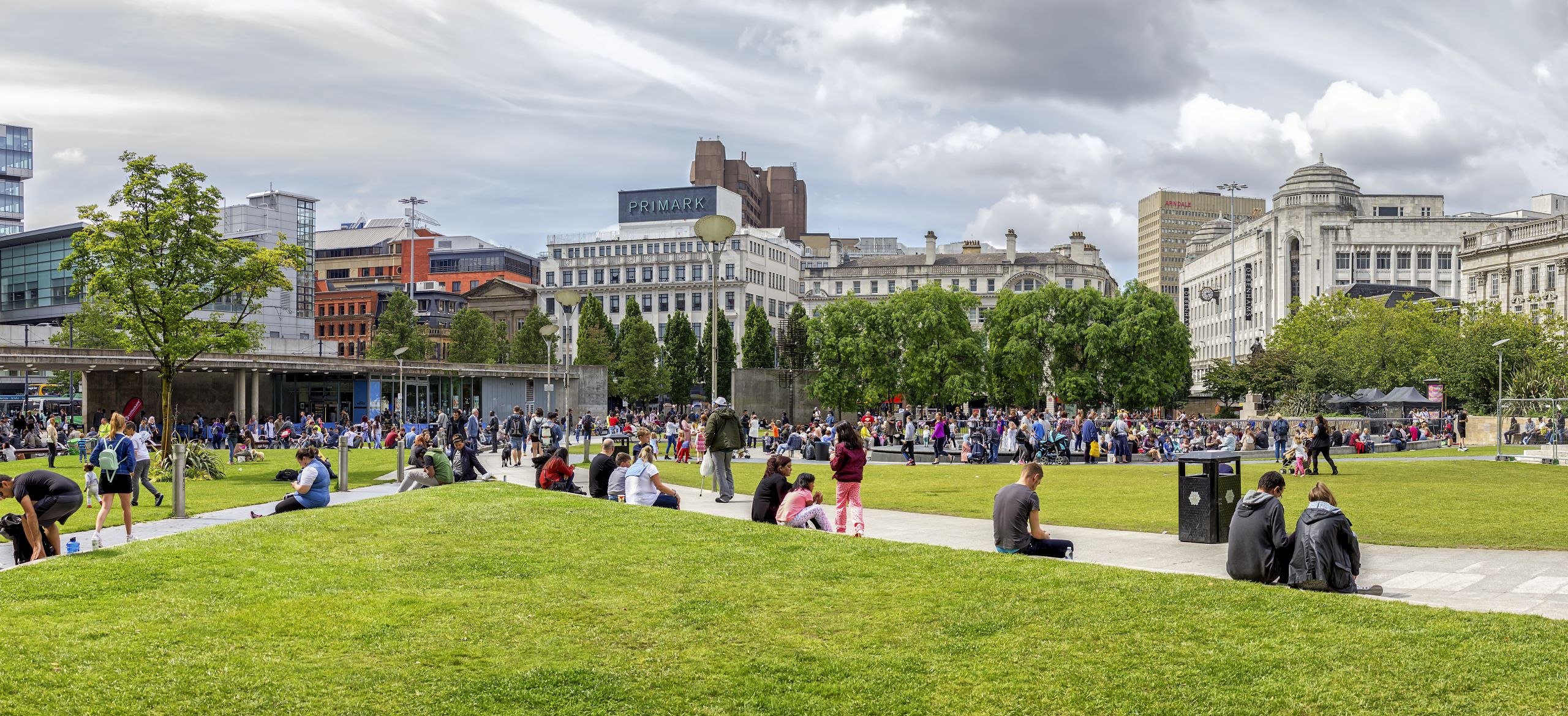

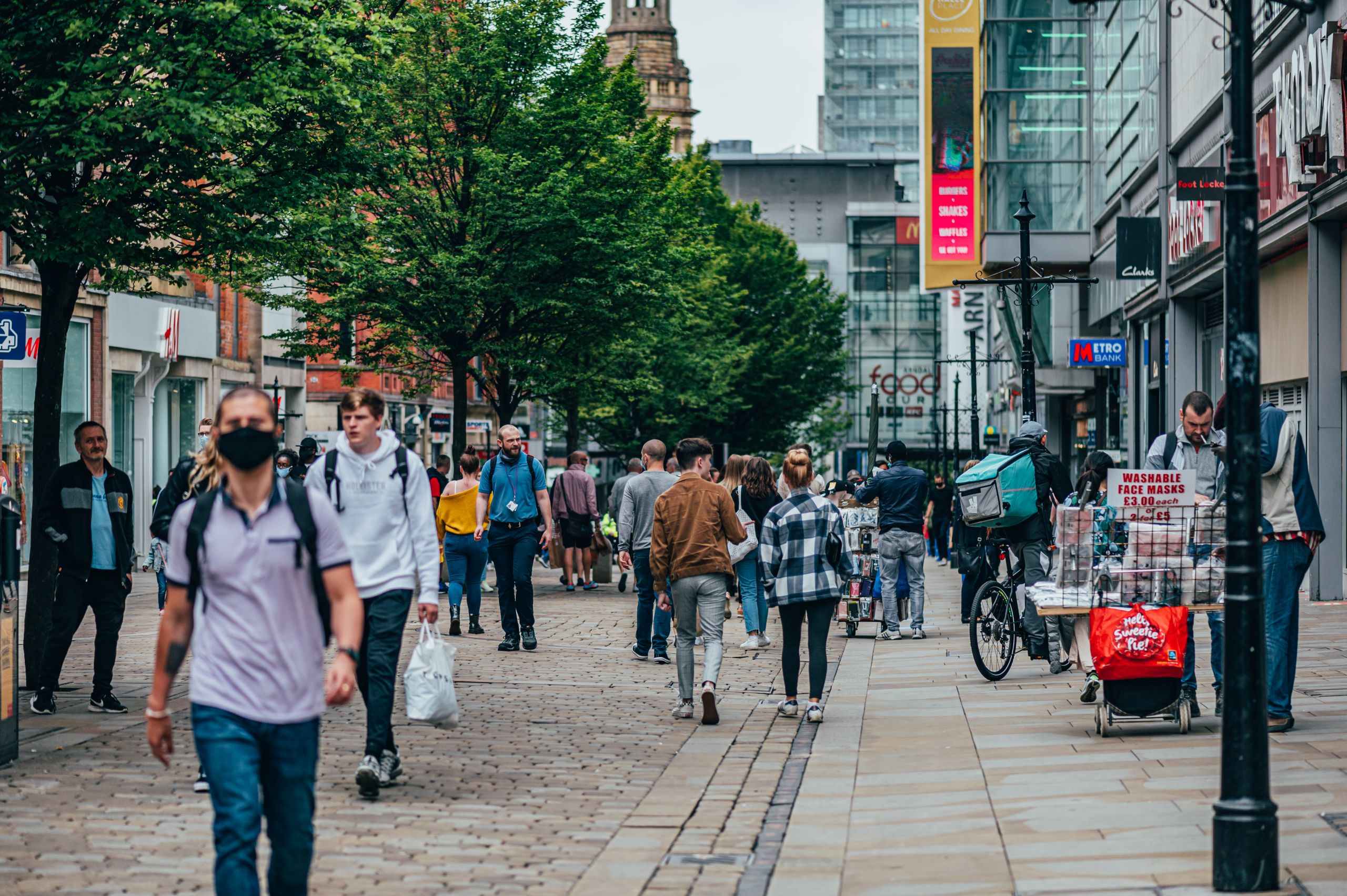
Decarbonising transport: Inequality, joined-up action, and the risk of technological optimism
Dr Cristina Temenos and Dr Joe Blakey, Manchester Urban Institute
August 2021
The Department for Transport (DfT) recently released their long-awaited Decarbonising Transport plan. In this blog, Dr Cristina Temenos and Dr Joe Blakey outline how its technologically-optimistic vision risks locking in high-carbon futures, overlooking transport inequalities, and opportunities for joined-up thinking and the precautionary principle.
- DfT’s Decarbonising Transport Plan makes some welcome proposals, but it is overly optimistic, gambling on future technologies to avoid fundamental changes to our lifestyles today.
- Policymakers should focus on tackling transport inequalities: both in terms of unequal access and the high-emitting practices of an elite few.
- There are opportunities for combining action with COVID-19 recovery – ensuring that public transport is attractive, spacious, and well-ventilated and that it and active travel schemes are properly resourced.
The Department for Transport’s plan, Decarbonising Transport: A Better Greener Britain, sets out the UK Government’s strategy for reducing carbon emissions in the transport sector. Pre-pandemic, the transport sector was responsible for over 25% of the UK’s carbon footprint and the largest contributor, which has hardly changed in the past three decades. Radical action is urgently required. The plan has many welcome proposals, such as the Zero Emission Vehicle mandate and support for car sharing schemes. However, as Mike Thompson, the Climate Change Committee’s Chief Economist notes, “the devil will be in the details”. Three key details to scrutinise are the risky techno-optimism, the role of inequality, and a need for joined-up thinking.
Can we have our cake and eat it too?
The DfT wants lifestyles to remain the same throughout any decarbonisation process. Holiday flights, car culture, and ongoing development are singled out as important aspects of British life to protect. But can we maintain high consumption lifestyles without high consumption of carbon, and is that what people want? Recent surveys of employees have shown the desire for more flexible work is correlated directly to commute times – longer commutes equals stronger preferences for flexible and remote work options. Previous work has also shown that in order for decarbonisation to meaningfully reduce emissions, it will need to be linked up to shifting infrastructure investments in active and public transport and it will entail a degree of lifestyle change.
Reckless technological optimism
Mobility transition requires more than just technological innovation. Currently, the plan relies heavily on electric vehicles (EVs). EVs produce fewer emissions over their lifetime, but decarbonisation needs to happen sooner than the technology might proliferate, with people likely to hold on to petrol and diesel cars for a while. It’s also not a strategic use of our future limited zero-carbon electricity supply and distracts us from other more-inclusive modes of transport.
Faith in technological solutions risks complacency in the present. Consider aviation; the plan lauds investment into sustainable aviation fuels and research into zero-carbon flights as a solution while passenger numbers are predicted to grow. This is despite later acknowledgement that the ‘solution certainty’, ‘infrastructure maturity’ and ‘fleet penetration’ of these technologies are all very low. The crux of this strategy is wishful thinking. But we can take certain action now in the form of demand management, such as frequent flyer caps, to prevent more dangerous levels of warming.
For aviation, offsetting (balancing emission with removals or reductions elsewhere) is treated as an insurance policy where “residual emissions […] will be offset by credible, verifiable and demonstrable” schemes. Negative emissions technologies, such as carbon capture and storage, are really the only form of offsetting that come close to this criteria, but these are exceedingly expensive and it is uncertain if they can deployed at scale. It forms another high-stakes technological gamble to avoid the sensible precaution of action today.
Decarbonisation for who?
Inequality is largely overlooked in the plan. Access to transportation choices is highly uneven based on deprivation levels. However, the only nod to this issue is a requirement for consultation on traffic reduction and an Ofgem recommendation to socialise the costs of electricity network upgrades (for things like e-vehicle charging stations) across all bill payers. There is a real opportunity to ensure that the benefits of decarbonisation are equitably distributed across a broad section of society and that linked up planning could potentially address not only the climate crisis but also issues of transport access. Too much focus on techno-fixes without consideration of uneven access, either through affordability or geography, risks perpetuating ongoing issues of transport justice.
We know that transport emissions are greatest for the richest in our society. As Oxfam noted, the richest 10% use around 45% of energy linked to ground transport, and 75% of the energy linked to aviation. Tackling high-emitting mobility habits of the rich – such as the aforementioned frequent flier cap, bans on unsustainable high-carbon luxuries such as SUVs, or more fundamental wealth redistribution to simultaneously tackle structural inequalities – would conserve the limited remaining carbon budget for all.
Linked up planning
The plan’s first priority is a welcome one: accelerating the shift to public and active transport, making them “the natural first choice for our daily activities”. However, the effect of COVID-19 on our travel choices tells a different story. Reductions in automobile traffic have rebounded to pre-pandemic levels (even exceeding them in places). Public transportation, meanwhile, remains below pre-pandemic levels (see below).

The uptick in driving and low public transport levels are correlated. Many have chosen to avoid public transport to reduce their risk of catching COVID-19 – and some of these people will have turned to driving instead. It is too soon to tell when or how this reticence can be overcome. To deliver this priority, it is imperative that transport consultations take into account public health considerations, establish commitments to healthy transport infrastructure (such as adequate spacing and ventilation), and ensure that the data used to model potential ridership is not reflective of current low-levels.
Similarly, during the pandemic, cycling in urban areas has gone up by as much as 22% in London and 20% in Greater Manchester. Some routes in GM have shown increases of up to 50% for weekday trips and 62% on weekends according to unpublished data from TfGM. Numbers dipped as car traffic increased, with the decline in vehicles creating room and assurance for cyclists to take to the streets and suggesting a correlation between cyclists’ concern for road safety and ridership levels. Infrastructure upgrades and prioritising pedestrianisation and active transport routes should be a priority. This must be coupled with a plan and resources dedicated to ensuring the spaces created for cycling and walking are safe and clear of vehicles parked in bike lanes or on pavements.
In Europe, investment in cycling infrastructure has proven successful. Paris has seen a 52% ridership increase after a €300,000,000 investment in cycle lanes, and Amsterdam has prioritised cycling infrastructure. UK cities have had more piecemeal interventions. However, a 2020 survey showed that (pre-pandemic) the best UK cities to cycle in were Lancaster and Exeter – both cities that had been selected to promote cycling in 2005, demonstrating that targeted long-term investment produces results when it focuses on linked up planning across equity and infrastructure. Recent changes to local authorities’ ability to fine drivers parking in cycle lanes and the anticipated change of legislation prioritising pedestrians in a new road hierarchy are welcome interventions to help shift mobility culture away from cars towards active transport.
A matter of space and time
The DfT plan is a useful roadmap for thinking through multi-scalar strategies to achieve net zero and focus on each of the six priority areas. Policy approaches for low-carbon transitions work best when there is agreement across the local, regional, national, and international scales. To make active travel the first choice for trips, for instance, decarbonisation initiatives need to be linked up with spatial planning at the regional and local levels. There needs to be space made for alternative modes of transportation, and encouragement from government and community leaders to ensure these spaces are valued in the community by a wide transect of the people.
Ultimately, time is critical: we need to make these cuts quickly. With transport emissions hardly changing in the last 30 years, the renewed optimism that we can innovate our way out of a climate crisis without compromise seems misplaced. Each passing year results in a greater depletion of the global carbon budget to stay within safer levels of warming. We can’t gamble on the future, but should follow the precautionary principle by delivering radical cuts now.
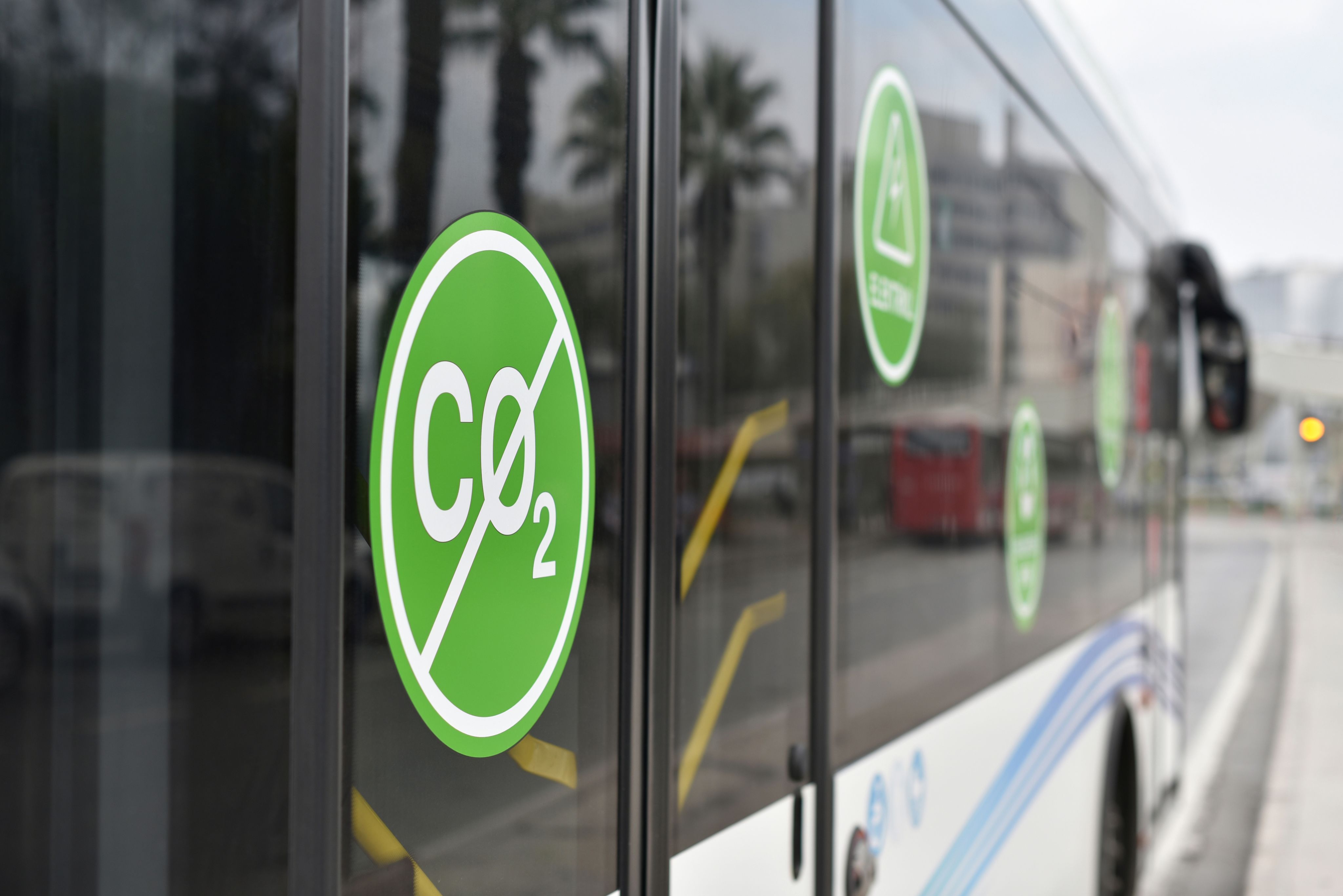
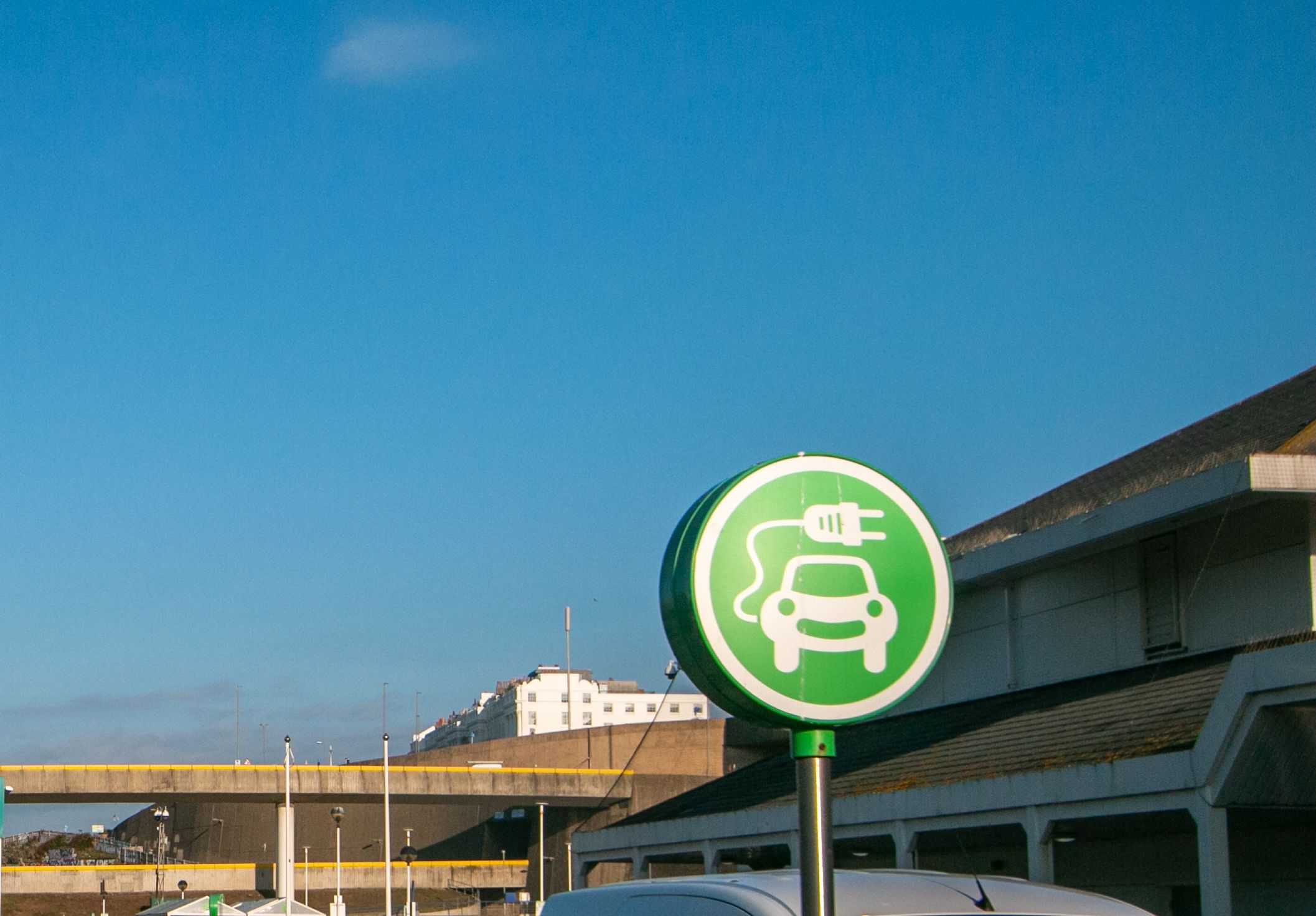

Mobility transitions: COVID-19 and building back better post-carbon transport futures
Dr Cristina Temenos, Manchester Urban Institute
November 2020
In the days and weeks following the global lockdowns due to COVID-19, reports emerged on plunging carbon emissions and better air quality. The hashtag #BuildBackBetter quickly emerged as communities and governments started thinking about how to reconfigure essential travel infrastructure in a rapidly changing world. But as lockdown restrictions have eased, to varying levels, emissions have begun to rise again. In this blog, Dr Cristina Temenos, from the Manchester Urban Institute and the Department of Geography, outlines suggestions to reduce carbon emissions in the transportation sector.
- A mobility transition is not a straightforward upgrade of transport technology.
- An approach to mobility transitions informed by social context and including as many stakeholders as possible is likely to have a greater chance of success.
- Policymakers need to consider the strategic alignment of transition policies at different scales, ensuring long-term and short-term goals in different policy domains do not contradict each other.
- Rather than being aligned with the dominant narrative of economic growth, mobility needs to become aligned with notions of citizenship and common good.
The need to reduce carbon emissions in the transportation sector isn’t a new idea. Longstanding political debates surrounding efficiency, cost, and lifestyle change have long held that transition to low carbon technologies, planning for low carbon futures, and implementing meaningful change must happen slowly over time. But COVID-19 has shown us that the only barrier to efficient low-carbon transition is political will. For example, municipalities in Greater Manchester and other cities in the UK have rapidly innovated car-free streets and segregated cycle lanes. Yet there has been debate about whether these interventions should remain permanent. So, how do governments build back better for the long-term?
This is a question my research team and I have been examining since 2014. Our Living in the Mobility Transition project, led by Professor Tim Cresswell and Professor Peter Adey, looked at policies and government initiatives to transfer to low-carbon ways of moving across 14 countries: United Kingdom, Canada, Norway, The Netherlands, Portugal, Brazil, Chile, South Africa, United Arab Emirates, Turkey, Kazakhstan, Singapore, South Korea, and New Zealand. We found that while there is no ‘ideal low-carbon mobility transition policy’, there are policy practices that can help guide decision-makers in constructing effective policies. I introduce these practices below, and more details can be found in our policy brief.
Importance of social context
A mobility transition is not straightforwardly a transport technology transition. Focusing on the technologies with little regard for the social context is likely to result in full or partial failure. At a macro level, the most straightforward approach to reducing carbon emissions from transport is to: a) reduce or eliminate the need to travel and b) decrease the length of necessary trips. An approach to mobility transitions informed by work on the social context and meaning of mobility and sensitive to local and national context is most likely to include as many stakeholders as possible and have a greater chance of success.
It is important to consider who policies work for. While it is possible to say that carbon tax policies, for instance, are likely to result in reduced carbon emissions, it is also clear that without redistribution, such a policy is socially regressive and likely to disproportionately impact impoverished, marginalised and, particularly, rural communities. Similarly, the promotion of a Bus Rapid Transit system may well reduce carbon emissions in the city but is far from ideal if it is inaccessible to the mobility disabled. More than that, by being inaccessible it actually contributes to the production of disability. One way to think through this issue is to produce transition policies in bundles. A carbon tax, for instance, could be coupled with redistribution policies that actively assist the impoverished and marginalised populations who disproportionately bear the brunt of the costs.
While the absolute reduction in carbon emissions is one important measure, it is necessary to consider other possible impacts such as the social ones noted above. The widespread adoption of automated electric vehicles, for instance, could result in unsustainable increases on power production. Similarly, the sudden possibility of cars with no inhabitants could increase congestion in an alarming way as cars will be travelling with no driver or passengers.
Strategic alignment and complexities
Policymakers need to consider the strategic alignment of transition policies at different scales. They should ask in what ways will transition policy be more or less likely to fail given their nesting within often contradictory scales and times of policymaking? The most significant mismatch of policy at different scales and times of policymaking occurred when medium- to long-term environmental transition concerns were in contradiction to shorter-term economic goals of growth and profitability.
It is also important to avoid overly simplistic, reductive or universalist understandings of mobile people. Transport planning has traditionally assumed a universal human being as the typical mobile subject. Commuters have been imagined as though they have no gender, passengers have been entered into flow models as seemingly universal subjects, and issues of disability and accessibility have not been included in consideration of transition. In reality, any effective transition policy must account for the diversity of human bodies and subjects and their different needs.
Separating mobility and economic growth
There is a danger of top-down policies influenced primarily by the private sector telling citizens how to move based on market logics. Even the language used can alienate potential allies by creating meanings for mobility that are not aligned with the needs and desires of everyday life. Policymakers need to become policy-enablers who encourage and stimulate local organisations, coalitions and individuals in community participation for mobility transition. Rather than being aligned with the dominant narrative of economic growth, mobility needs to become aligned with notions of citizenship and common good.
Of all the tensions that lead to transition failure that we have identified, this is the most frequent. As long as mobility and economic growth are conceptually and culturally linked then transition policies can never reach their full potential. Low-carbon mobility transitions are often added on as afterthoughts to economic purposes. There are linked-up solutions that start from a position of the public good that complement our findings. The New Green Deal, which is focused on finding just transitions that work for people and society, and New Municipalism, which has seen success in places as diverse as Barcelona in Spain to Preston in the UK, are two such examples. Policy practices such as those we present in our brief are important frameworks for thinking about ways we can build back better post-carbon futures.


How can we drive businesses to deliver on Net Zero?
Professor Jonatan Pinkse, Manchester Institute of Innovation Research
February 2021
Nearly a fifth of the UK’s carbon emissions are generated by businesses. With global emissions expected to be just 4% lower than in 2019, urgent action is required across all sectors to achieve net zero goals. But how can we push businesses to sustainability when their bottom line is at stake? Here, Professor Jonatan Pinkse, from the Manchester Institute of Innovation Research, outlines the policy changes needed to support the business community’s transition to net zero.
- The ten-point plan has been devised to drive a Green Industrial Revolution. However, green initiatives and jobs don’t necessarily go together;
- By thinking ‘jobs’ first, then climate change, you forgo the opportunity to address the climate crisis;
- Governments need to prioritise sustainability policies, that in turn will drive a green recovery by creating new market demand;
- A three-pronged policy mix is required: strict targets through bans; incentives through subsidies; and crucially, support to drive business model innovation, which will deliver economic and environmental benefits across industries.
Green initiatives and jobs don’t necessarily go together, and the ideal of a win: win situation is not always possible.
Of course, there are parts of the ten-point plan for a green industrial revolution that will lead to job creation. For example, offshore wind requires many skilled workers. Likewise, there are sustainable practices that will lead to profit, such as in the case of energy efficiency improvements. But there are also issues like biodiversity where there isn’t a clear business case, and it’s precisely for that reason that biodiversity has been ignored by most companies for a long time.
However, if we continue to think ‘jobs’ first, then climate change, we are forgoing the opportunity to really address the environmental issue. The climate crisis is so critical that we need to look for environmental solutions that, in some cases, will not create many jobs, but will reduce a lot of greenhouse gas emissions. Carrying out these solutions is both a sensible thing to do for climate change, and a crucial thing to do for future generations.
But how can we do that? Investors expect a payoff, and immediate returns aren’t guaranteed when you go for low carbon. This is precisely where governments need to play a role; it’s only when governments step in and say that you can’t use certain technologies that you create a market for alternatives. This is the power of governments, and this is why a ban on new petrol and diesel cars will be more powerful than a thousand subsidies on electric vehicles. People will have to buy electric vehicles whether they like it or not because the option they would normally go for is no longer possible.
We have to quickly get to the stage where government is not afraid of just banning certain things. There will always be pushback from businesses saying the technology is not ready. However, a lot of that is just spin in an attempt to oppose strict targets. Why has Germany been more successful with its energy transition targets? Simply because they’ve just been stricter and more willing to make bold policy decisions.
Governments need to put in place bans that will deliver environmental gains, confident that by generating new market demand, they are also generating opportunities for start-ups to make money in the supporting infrastructure.
That said, it is always about the policy mix. There is never one instrument that fixes all. In addition to the ban, you need incentives for electric cars, to get consumers to trade in their old diesel and petrol engines.
Accompanying this, you have to stop subsidies for fossil fuels, while creating subsidies for renewables. You have to do both – incentivise and ban – because otherwise you end up with a lot of contradictions. Critically, when talking about addressing the energy agenda, it’s not just about bringing in new technologies. It’s imperative that we also think about new business models. The policy mix must also include business model innovation if we are to drive a long lasting, green recovery.
We need to think about what people actually want, what kind of value are they looking for, and how that can be delivered.
The idea that energy is a boring commodity has changed. For example, we have seen a shift in customer behaviour where people are happy to pay more for green, locally sourced energy because they want to feel like they are contributing to the local energy market, while supporting environmental change. As a result, energy has become an interesting product where people have other values, which in turn translate into value for investors.
Consequently, we are seeing the business model for energy supply changing because the platform business model is making its entrance. Vandebron, which translates to “from the source”, is a Dutch start-up stealing headlines because they allow customers to buy local energy straight from the source. It’s intermediaries like Vandebron, the ‘Amazons’ of the energy world, that have the opportunity to become the biggest players because they are able to source energy from all over the place and present the options to customers, who can get exactly what they want.
The type of business model innovation required depends on the industry. So, for cars, innovation will focus on the move from ownership to subscription (mobility-as-a-service) as the realities of increased urbanisation change what people are looking for.
So, with innovation bespoke to each industry, how can policymakers support business models? By reviewing what is in proposed policies. With each new policy we need to ask: are these new policies purely looking at new technologies, or are they supporting long-term change in the market?
Which means, for example, if customers need to be empowered to play a part in the energy market, information disclosure policies need to be introduced, forcing companies to share the CO2 emissions for every option. Information disclosure policies, which are an old instrument, can actually become really powerful, in terms of both enabling customer empowerment, and also in providing the market demand that small start-ups rely on.
Ultimately, it’s the application of foresight in policy, in supporting business model innovation, that will drive business to adopt sustainability practices and achieve a green industrial revolution.



Decarbonising heating: flying by the heat of our pants?
Dr Laurence Stamford, Manchester Environmental Research Institute
April 2021
The 26th UN Climate Change Conference – COP26 – is on the horizon, due to kick off in Glasgow on 1 November. It seems that, despite the socio-economic worries brought on by a global pandemic, heightened societal attention to climate change is here to stay. Now, more than ever, climate change is at the forefront of public discourse and, in November, the UK will be the focal point. In this blog, Dr Laurence Stamford outlines the need for radical change in our heating system and the most environmentally sound route to its decarbonisation.
- Compared to other sectors, there is very little progress in decarbonising heat, despite it being one of the biggest contributors to climate change.
- The UK has plans for low-carbon heating in new homes, but nothing substantive for existing buildings.
- Using a life cycle perspective, air source heat pumps appear to be the lowest-impact option but must be combined with efficiency improvements. Hydrogen from various sources can also play a role.
- Policies supporting retrofitting our buildings are needed urgently.
In some areas the UK has made impressive progress on climate change, most notably the electricity sector, where the past 15 years have seen a climate-friendly combination of falling demand (by 18%) and plummeting greenhouse gas intensity (by almost 50%). However, while electrical power is often the centre of attention, we must remember that – as is the case for most countries – electricity accounts for less than a fifth of the UK’s final energy use: 17% to be exact. So, what about the remaining 83%? The biggest contributors are heating and transport, and both are harder to tackle than electricity due their stubborn reliance on combustion of solid, liquid or gaseous fuels.
Change at a glacial pace
This is a global challenge; heating accounted for half of the world’s energy consumption in 2018, and 90% of that was provided by fossil fuels. Altogether, heat is responsible for 40% of global carbon dioxide emissions. Unfortunately – and unlike the transformation of the electricity sector – this picture doesn’t seem to be changing: globally, fossil fuel-based technology and conventional resistive electric heaters accounted for almost 80% of heating equipment sales in 2019. Across Europe, 57% of the heating demand of buildings is met by natural gas with a further 23% provided by oil or coal.
If we have any chance of limiting climate change to 1.5 or 2°C, this has to change fast. In the UK, the government plans to introduce a Future Homes Standard in 2025 which will require energy efficiency measures and prohibit fossil fuel boilers in new homes. This is a great start, but of course there are 27 million existing homes in the UK – plus millions of offices and other commercial premises – all of which will need decarbonising in some way or another over the coming years. Despite initiatives like the Clean Growth Strategy, currently there is no official plan to tackle this situation: the Green Homes Grant was notoriously ineffective, and the Renewable Heat Incentive expires in March 2022 having received just 87,000 household applications thus far over its 7 year life. Until this is resolved, the average home in the UK will continue to burn nearly 3 cubic metres of natural gas every single day.
Heat in a net zero future
On the plus side, there are various technologies available: hydrogen can be generated in various ways and burned for heat; biomethane can be produced from biomass or biowaste and burned in the same way as natural gas; air-source and ground-source heat pumps can provide around 3 units of heat for every unit of electricity they consume, by operating like a refrigerator in reverse.
This means that we could decarbonise heating via many different routes. For instance, the Committee on Climate Change has modelled future pathways for net zero which rely quite heavily on air-source heat pumps, with the majority of UK homes installing one in the coming decades. In contrast, the National Grid’s Future Energy Scenarios also encompass a net zero future but achieve it with greater emphasis on a hydrogen gas network feeding hydrogen boilers.
One obvious question arising from all of this is: how do our options compare in terms of their environmental sustainability? Are there any we should target via policy, or any we should avoid?
The options
Our recent open-access paper tried to answer these questions by taking into account the whole life cycle, from manufacture and installation to fuel production, use, and end-of-life. It covered various fossil fuelled boilers, hydrogen boilers, electric resistive heaters, and air-source heat pumps. In terms of carbon footprint, a gas boiler has an impact of about 220g CO2e/kWh, almost identical to a resistive electric heater at 226g. An oil boiler comes in at 316g, and an air-source heat pump is considerably lower at 93g.
So, an immediate switch to heat pumps would result in a GHG saving of about 60%. But what about the future? The coming years are likely to see more changes to the gas supply and electricity mix, as well as a potential roll-out of hydrogen piped to people’s homes and offices. To account for this, we used the same scenarios mentioned above from the CCC and National Grid while also varying the gas supply to include increases in either imported liquefied natural gas or domestic shale gas. The results seem to support air source heat pumps as the best option, but first let’s consider hydrogen.
There are two main methods of producing hydrogen: from natural gas, or from electrolysis. We estimate that, by 2050, a boiler burning hydrogen from natural gas (with carbon capture) will have a carbon footprint of 64-73g CO2e/kWh. Counterintuitively, hydrogen from electrolysis can potentially go as low as -59g, ie, net removal of CO2 from the atmosphere. This is due to the extremely high electricity demand that would be created by a national electrolysis programme, some of which could be met, hypothetically, by burning biomass with carbon capture for net-negative emissions. However, this implies an enormous increase in electricity demand (though a limited percentage of this could be met by off-peak nuclear and renewables), reliance on expensive and uncertain carbon sequestration technology, and increases in non-carbon environmental impacts. In comparison, the 2050 estimate for a heat pump – which requires no long-term storage and monitoring of sequestered CO2 – is 8-21g CO2e/kWh, and could fall to zero by using different refrigerants.
This suggests that heat pumps should receive the bulk of incentivisation effort from policymakers. Existing subsidies for heat pumps, like the Renewable Heat Incentive mentioned earlier, have proved disappointingly ineffective; perhaps this is because they provide payments per unit of heat generated over a 7-year period, leaving homeowners with the arduous task of finding upwards of £10,000 upfront to pay for the installation. Future schemes might consider capital cost subsidy, not dissimilar to the plug-in car grant offered for electric vehicles.
It’s not all about carbon
Despite its importance, climate change is only one component of our overarching sustainability goals. In the aforementioned paper, we also assessed 18 other criteria, ranging from particulate matter formation to eco-toxicity and acidification. Frustratingly, ignoring their carbon footprint, modern gas boilers have the lowest impacts in many of these categories. However, looking at a mix of technologies in different future scenarios, it’s likely that decarbonising the whole heating sector by more than 90% can also benefit us in terms of particulate matter formation, photochemical smog creation, ozone layer depletion and terrestrial acidification. Conversely, it’s likely that metal depletion, human toxicity and eco-toxicity will increase in future.
Faced with a trade-off like this, the best solution is often to improve our efficiency: with an aggressive programme to retrofit energy efficiency measures into buildings, we could minimise the demand for heat in the first place, thereby ensuring that we improve a large range of environmental impacts and mitigate the detriment to others. To be effective, a financial incentive programme like this needs to be easily accessible, low on bureaucracy and, crucially, long-lasting: the biggest failure of the Green Homes Grant was that it only lasted a few months, failing to provide any long-term certainty or ramp-up time for homeowners and industry. It could also be strengthened by a hard commitment to reduce heat demand by a fixed percentage and completely phase out the installation of fossil-fired boilers in existing homes – not just new ones – within the next 10 years.
Overall, it’s clear that we can achieve net zero heating by 2050. On balance it seems that heat pumps are the most environmentally sound route to pursue, but whatever happens we need serious government commitment to incentivising energy efficiency measures and technology retrofitting programmes for buildings. And these commitments can’t arrive soon enough.



The hydrogen economy: why is the sub-surface essential?
Professor Kevin Taylor, Manchester Environmental Research Institute
February 2021
The UK Government has made a commitment to deliver a hydrogen economy as a means to decarbonise heating and heavy transport. This was most recently highlighted in the Government’s “Ten-point plan for a green industrial revolution” and the recent Energy White Paper “Powering our net zero future”. In this blog, Professor Kevin Taylor, from the Manchester Environmental Research Institute, lays out the role of the sub-surface in both hydrogen storage and carbon capture – both crucial strands of the UK’s net zero ambitions.
- Most hydrogen production currently generates CO2 as a by-product, which needs to be stored via carbon capture and storage.
- Once produced, hydrogen gas will also need the be stored temporarily or seasonally to address demand fluctuations.
- The sub-surface can meet both of these roles using existing natural formations, such as deeply buried sandstones offshore or salt caverns in Cheshire.
- Policymakers must implement a nation-wide pilot programme to identify more suitable sites, and ensure the UK has the skills and infrastructure needed to make sub-surface storage a reality.
The government’s commitment to a hydrogen economy has led to promises of a number of hydrogen networks in the UK, a potential “hydrogen town” by the end of the decade, and of greater investment across the energy sector to meet these targets. However, this ambition is not without its challenges and risks. As a geoscientist, it is clear to me that two aspects where we will need significant and rapid investment, leading to development and implementation of technology, are at the end of the hydrogen economy chain – underground (or geological) capture and storage (CCS) – and the very likely need to temporarily store hydrogen in the sub-surface to buffer intermittent energy demands. While on the face of it these appear to be different challenges, they share a great deal in common.
Currently, most of the global production of hydrogen is manufactured from coal (so-called brown hydrogen). This process not only fuels the coal economy, but also produces significant amounts of CO2 as a by-product. An alternative source is through the manufacture of hydrogen from natural methane gas, via a process called steam methane reformation; so-called grey hydrogen. While this is “cleaner” than brown hydrogen, it still produces CO2 as a by-product. Much store has been placed, at least in the next two decades, in burying this CO2 in the ground (carbon capture and storage – CCS), thereby locking the CO2 away long-term (blue hydrogen). The ultimate goal, of course, is for green hydrogen to be produced utilising renewable energy sources and the electrolysis of water, which releases no CO2. However, the economics of green hydrogen production, and the relative abundance and cheaper availability of producing it from methane, has led many to conclude that CCS will need to be a key part of the hydrogen economy supply chain for the foreseeable future.
Why use the sub-surface for storage and disposal?
To many the sub-surface has traditionally been associated with the extraction of fossil fuels, and so it is not immediately seen by the public to be part of the solution to meeting net zero. However, the sub-surface can and should play a key role in safely disposing of CO2. We know that two potential parts of the sub-surface could hold and retain CO2; either spent oil and gas reservoirs, or deep saline aquifers. Currently, the UK has no active CCS sites operational – plans to invest in CCS pilot sites were abandoned in 2015 due to insufficient fiscal support from the previous government. In contrast, there have been a number of successful CCS projects in the Norwegian sector of the North Sea (eg the Sleipner CCS site) and new projects have recently been announced (such as the Northern Lights Project). According to the IEA, globally, there are still only around 20 projects in commercial use, but in the last three years, plans for more than 30 commercial carbon capture facilities have come forward, representing a potential investment of about $27bn (£20.7bn). The UK, for example, has announced two new projects in Teesside and Humberside involving consortia of energy and engineering companies.
The ability of the sub-surface to trap gas has also led to proposals for the temporary sub-surface storage of hydrogen, in order to off-set fluctuating/seasonal demand. These could be simple engineered tanks buried in the ground, but why go to the expense of this when rocks in the sub-surface have the capability to have gases pumped in and pumped out, as evidenced by a number of existing gas storage projects in the UK and wider. A recent assessment has suggested that gas fields under the North Sea could provide this storage. Here, the northwest of England could also help to offer sub-surface storage solutions with the presence of highly suitable mined-out salt caverns in Cheshire.
Integration in the northwest of England
The northwest of England has a hydrogen economy project that is being developed with a clear ambition to deliver both hydrogen and a path to net zero by burying CO2 produced via hydrogen production, and utilising temporary hydrogen storage in the sub-surface. Sites that may be suitable for the former have been identified in the sub-surface under the Irish Sea, where there are existing hydrocarbon gas sub-surface storage systems, in addition to the already mentioned potential for hydrogen storage in Cheshire salt caverns.
It is clear that the sub-surface is a key player in the hydrogen economy, and geoscience and engineering technology and skills, which already exist in many parts of the energy sector, will be critical to delivering the hydrogen economy promised by the UK Government. Policymakers should work with established experts in this field, such as oil and gas geologists and engineers, to reduce the skills gap needed to properly utilise the potential of the sub-surface.
The northwest of England is in an excellent position to take advantage of key areas beneath our feet. Investment and research towards better understanding this sub-surface domain – and how it will behave when gases are pumped into, stored and retrieved from it – will be needed here in the form of research pilot sites where independent and verifiable trials can take place are needed. Again, the northwest of England has a head-start in this. The British Geological Survey, together with the UKRI, have planned a UK Geoenergy Observatory in Cheshire, (UKGEOS) which will use data from lab studies on rock core from the sub-surface, combined with 3D mapping and in-situ real time monitoring data to reduce uncertainties. But given the variable geology of the sub-surface, both regionally and nationally, a policy of wider study should be a priority. We are on the road to hydrogen, but there is much to be done if we are to realise this exciting potential.


Taking the lead in hydrogen: next steps
Professor Phil Withers and Dr Robert Sorrell, the Henry Royce Institute
June 2021
The deployment of new and existing materials will play a critical role in delivering the growth of the hydrogen sector, identified as a cornerstone of the UK Government’s net zero ambitions. In this blog, Professor Phil Withers and Dr Robert Sorrell, from the Henry Royce Institute, lay out the research priorities on the path to wide scale hydrogen usage, and how policymakers can support and implement new developments in materials science.
- A new roadmap from the Henry Royce Institute identifies the challenges and opportunities in the UK taking a global lead in hydrogen technology
- One priority area for research is the introduction of hydrogen gas into domestic heating and national infrastructure
- Understanding how materials interact with hydrogen, including degradation over time, is fundamental to the transition to a low-carbon economy
With advanced plans for gigawatt scale low carbon hydrogen production, a programme investigating the conversion of natural gas networks to hydrogen, and various ongoing trials for fleets of hydrogen-fuelled cars, buses and vans, the UK is leading the way in terms of embracing the hydrogen economy.
This is precisely why here at the Henry Royce Institute for Advanced Materials we commissioned a study, published earlier this month, entitled ‘materials for end to end hydrogen’ that examines the critical materials research challenges the sector now faces. The report identifies a number of priorities key to supporting materials development and uptake, and how addressing these challenges will underpin the UK’s wider hydrogen energy sector leadership ambitions by providing potential materials solutions that can support its accelerated deployment.
Significant role
The significant role of hydrogen in driving the UK’s net zero agenda is widely acknowledged, with the government’s Hydrogen Strategy expected this year. The aim of our report, funded by the Engineering and Physical Sciences Research Council, was to highlight the key materials areas critical to enabling wide-scale hydrogen deployment in a 2050 timescale and to catalyse the investment and partnerships required to deliver technology breakthroughs in these areas.
In particular the report identifies six research priorities around hydrogen production, storage and distribution and use, and the need for a UK testing and accreditation facility.
It also sets out the materials research and development opportunities we need to progress now in order to enable the deployment of hydrogen as a viable energy source at scale by 2050. Further, it provides insights into early stage materials discovery and innovation which could accelerate our ambitions and deliver step changes in our ability to produce and deploy hydrogen.
Targeted support
The study demonstrates vividly that further targeted support is necessary to build a robust, efficient and sustainable hydrogen industry to support the UK’s net-zero aims. Action must be taken quickly to meet our 2050 commitments given the time it takes to deliver new materials systems. The key priorities identified in the study are:
*Reducing the need for critical materials in polymer electrolyte membrane (PEM) electrolysers to realise global electrolysis capacity ambitions at a terawatt scale.
Electrolysis is a promising way of using electricity to split water into hydrogen and oxygen. However, the leading electrolyser technology (PEM) contains rare and expensive elements to catalyse the process, increasing the capital cost of PEM electrolysers, and the cost of clean hydrogen.
The global production capacity of these rare elements will place limits on the electrolysis capacity that can be developed at current catalyst loading levels. Materials research targeted at reducing rare element loading will be required to realise PEM electrolysis capacity on a terawatt scale.
*Improving point of use hydrogen purification technologies, enabling large scale supply from the gas grid to hydrogen fuel cells.
In principle, hydrogen can be distributed effectively using the existing UK gas grid infrastructure, reducing the cost of hydrogen distribution, and enabling the powering of fuel cells to create clean electricity.
Given that hydrogen leaving the grid will be at relatively low purity, and fuel cells currently require high levels of hydrogen purity, improvements are required in downstream purification technologies close to point of use. This requires further development of the leading materials-based solutions, such as membranes and pressure swing adsorption. These technologies will need to be developed and deployed in collaboration with organisations including the Energy Networks Association, Gas Operators Network, National Grid, OFGEN, and energy suppliers as soon as possible to ensure the UK takes a leading role in the transition to a hydrogen-based gas network.
*Establishing a detailed understanding of materials degradation of the high volume compressors needed as part of the UK gas grid.
Transport of hydrogen in the gas grid is the responsibility of the gas network operators, and hydrogen levels will be increased in the first instance by blending with natural gas. This requires the use of compressors to take hydrogen to the pressures required for transmission and distribution.
The small size and light weight of hydrogen molecules, along with its ability to degrade materials, makes the design of long-lasting hydrogen compressors particularly challenging. Better understanding of compressor materials degradation in real world environments will enable challenges associated with materials selection and development to be understood and the effects of hydrogen degradation mitigated.
*Developing materials solutions for cost effective, conformable hydrogen tank storage in fuel cell vehicles.
Hydrogen-powered vehicles currently use gaseous hydrogen stored at 350 or 700 bar pressure in cylindrical vessels. Hydrogen storage tanks are the most expensive component in current hydrogen fuel cell cars and add significant weight. New materials solutions offering more conventional fuel tank shapes are therefore required to allow better use of on-board space and greater flexibility in vehicle design.
*Developing a UK capability to test, set standards, and accredit new materials.
Early-stage materials testing for some hydrogen applications has resulted widely varying methodologies. Developing standardised testing methodologies will increase confidence in results and collaboration between those undertaking research in the hydrogen space, and further cement the UK’s position as a leader in this field.
There is a role here for the Royce in terms of expertise, and for involving the National Physical Laboratory (NPL), the Health and Safety Executive (HSE) and the British Standards Institution (BSI) in supporting and legislating this.
*Improving catalysts for distributed ammonia production and cracking is needed, to realise ammonia’s potential as a hydrogen storage and distribution vector.
The relatively high density, efficiency of conversion, and moderate liquefaction temperature of ammonia has made it a key hydrogen carrier candidate. To support its use requires the development of efficient catalysts that allow ammonia to be produced on a distributed scale and enable it to be cracked more efficiently into hydrogen and nitrogen.
Next steps
One thing is clear; materials developments take time to research and implement and so the UK needs to act quickly and concertedly if we are to have the knowledge and materials data needed to safely adopt a hydrogen economy in time to meet our 2050 obligations. With this in mind, the Royce aims to facilitate identification of the resources and partnerships required to realise the UK’s leadership ambitions in these key materials fields.
To this end, a cross industry/academic group is developing a more detailed proposal outlining the research challenges, resources and capabilities required, and this proposal will be available by the end of July for consideration for inclusion in the November government spending review. There will be a role for BEIS in coordinating, sponsoring, and implementing the research priorities we have identified.
Through the success of our wind energy programme the UK has shown that it can lead the world in the development of green energy. We need to apply the same sense of urgency and clarity of focus in the forthcoming Hydrogen Strategy to ensure we are at the forefront of the hydrogen economy.
*You can read the full report on Materials for end to end hydrogen and summaries of the key materials research priorities here and you are welcome to feedback any comments to info@royce.ac.uk.
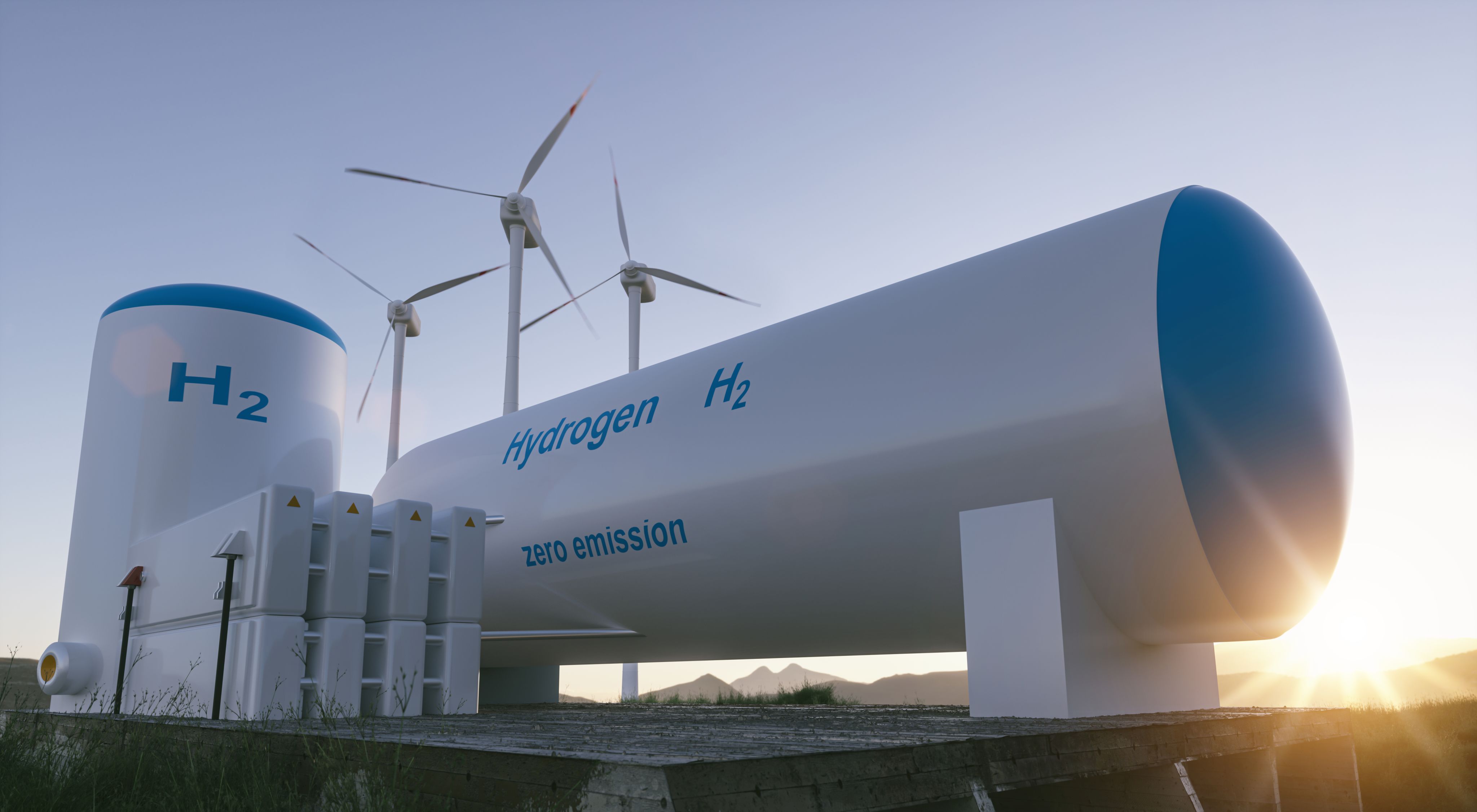
Skills shortage: The biggest challenge to offshore wind in 2021
Professor Mike Barnes, Manchester Environmental Research Institute
March 2021
If we want to support the increased electrification of transport and heat proposed in the Energy White Paper, this will require a radical change in the management of our energy economy. Managing and driving this new economy requires the development of a skilled workforce. The problem is, it’s not clear where the skills will come from. In this blog, Professor Mike Barnes from the Power Conversion group in the School of Electrical and Electronic Engineering addresses this issue and shares seven ways we can leverage the huge opportunity offshore wind provides for a green recovery.
- The skills shortage has been recognised by the government’s Energy White Paper as a major challenge, and the creation of a Green Jobs Taskforce is a welcome first step. However, the problem isn’t just the immediate technical specialists (eg divers for subsea inspections); to persuade companies to relocate their high value manufacturing to the UK, we will need to develop skills to support longer-term innovation.
- Bottlenecks are already occurring that risk our ability to deploy offshore wind at scale, but governments have the power to address skill shortages by funding and extending initiatives.
- By prioritising activity in seven areas – investing in R&D, developing specialist doctoral colleges, creating conversion programmes for graduates, scaling local training programmes, retaining existing skills from oil and gas industries, driving industry collaboration and by using best-practice in existing agencies – we can address it before it becomes a crisis.
Wind represents an easy win in the net zero challenge. It’s ready to be deployed at scale to immediately reduce our carbon emissions. In turn, this deployment will also support job creation, support the levelling up agenda, and consolidate the UK’s position as a global leader in wind technology. Deployed at scale, it will help deliver a green recovery and will play a key role in creating a green industrial revolution.
We need to get to 40 gigawatts of wind to support the ambitions of the Energy White Paper. Currently, installed offshore wind capacity is about 10 gigawatts and we are just about managing with the workforce we have. However, bottlenecks are starting to occur. The industry is trying to address the emerging skills shortages with headhunting but more must be done to address the skills gap – we need to start now, and we need to focus on the quick wins; the initiatives ready for roll-out.
Build back better
Firstly, we can invest in research that will help overcome the skills gap. For example, our work on the Engineering and Physical Sciences Research Council (EPRSC)-funded HOME Offshore project looked at ways we can use machine learning, robotics and advanced sensors to do remote inspections using AI. As a result, we were able to identify advanced sensors and robotics that could undertake potentially hazardous, expensive and time-consuming activities like surveying turbines. This allows highly skilled operatives to focus on remote diagnostics and repair, rather than waste time being transported by helicopter, winched on to turbines, and then having to undertake complex technical work at heights close to that of the Eiffel Tower.
Research allows us to drive rapid innovation: five years ago, we didn’t consider the use of robots; today we use drones daily. Investing in research means we can develop the technology vital to support and protect high-value jobs in this sector in the UK.
Investing in improving the technical literacy of our workforce is critical. It can allow us to manage all activity from within the UK and avoid globally outsourcing aspects of operation. Furthermore, we can develop a generation of innovative technical thinkers – engineers who enable us to embrace change and new ideas. The creation of new fully-funded doctoral training centres in engineering will establish a means to maintain our prowess in wind generation.
We also need to consider ways to convert talented students, with proven ability, into scientists and engineers. Master’s courses like Renewable Energy and Clean Technology (REACT) or Electrical and Power Systems Engineering at The University of Manchester are great examples. By providing these students with a means to transfer to a technical skills-based career, we give them the opportunity to embark on a well-paid, secure career in wind energy. We need more courses like this, that can also ideally be accessed through distance learning and in conjunction with on-the-job training, to allow students the chance to leverage opportunities in the UK, and maximise their potential in the job market.
On-the-ground training initiatives
We need to support the offshore wind opportunity with on-the-ground retraining initiatives. There are a lot of jobs associated with offshore wind: from helicopter operators to onshore logistics to auxiliary jobs, and there will be higher demand for them as the North East coast and Scotland are likely to see a lot of offshore wind development. Wind is injecting regeneration investment into places like Grimsby, Hull, parts of Newcastle and Hartlepool which are poised to benefit after having suffered (in varying degrees) from decades of industrial decline.
There are some good examples of such initiatives already – like the East of England Offshore Wind Skills Centre which has been set up to provide local people the chance to retrain. We need similar schemes across the North of England to drive local employment which will be key for longer term prosperity, making these areas attractive for future investment thanks to a local, skilled workforce.
Using UK know-how
Offshore wind energy has the potential to be a major industrial sector if we retain existing skills and capabilities developed from years of oil and gas know-how and access to companies experienced in operating in offshore environments.
Work offshore has traditionally been a younger person’s field, requiring as it does high levels of fitness to travel down a rope from a helicopter to work on large machinery at the top of a 100m wind turbine. With the introduction of new technology like robotic inspection or condition monitoring for remote fault signalling, future inspection could be done by remotely piloted drone, with resulting data sent onshore directly for real-time analysis by a team of experts. The skillsets required mean that people who would historically have been excluded from working offshore have no restrictions in these new roles. This means, there is no reason that remotely piloting a drone from an onshore control centre could not be done by someone who has worked in oil and gas for 35 years but no longer has the physicality needed to do so.
Industry collaboration
Finally, governments need to drive initiatives that will get the energy industry to collaborate.
G+ supported by UK Energy Institute is an excellent example of industry collaboration, bringing in companies to share best practice on offshore health and safety. There could be a lot more activity in this space and it needs to be led centrally.
If the government could bring industry together to create something approaching a common industry training programme for all UK-based offshore wind technical education, it would be hugely beneficial. It would make the UK the beacon for safety standards, for best practice application, and it would ultimately reduce costs. To ensure its success, we need to get key stakeholder champions on board early. The Green Jobs Taskforce is an excellent start in this direction but needs to be followed up by getting buy-in from industry stakeholders from key sectors.
Governments should utilise the skills and experience of existing agencies where possible, engaging the great number of agencies with excellent track records (OWA, ORE Catapult, Energy Institute/G+). Also given EPSRC’s excellent track record with Centres of Doctoral training, they can contribute extensively on the R&D skills side.
Investing in skills as an urgent priority provides people in the UK access to safe long-term jobs, creating populations of skilled operatives to help achieve the levelling up agenda. It will ensure that the UK has the research capability to drive innovation and remain at the forefront of this industry. From an investment point of view, building wind farms and locating the supply chains in the UK becomes a ‘no-brainer’, as we have both the geography and local skills.


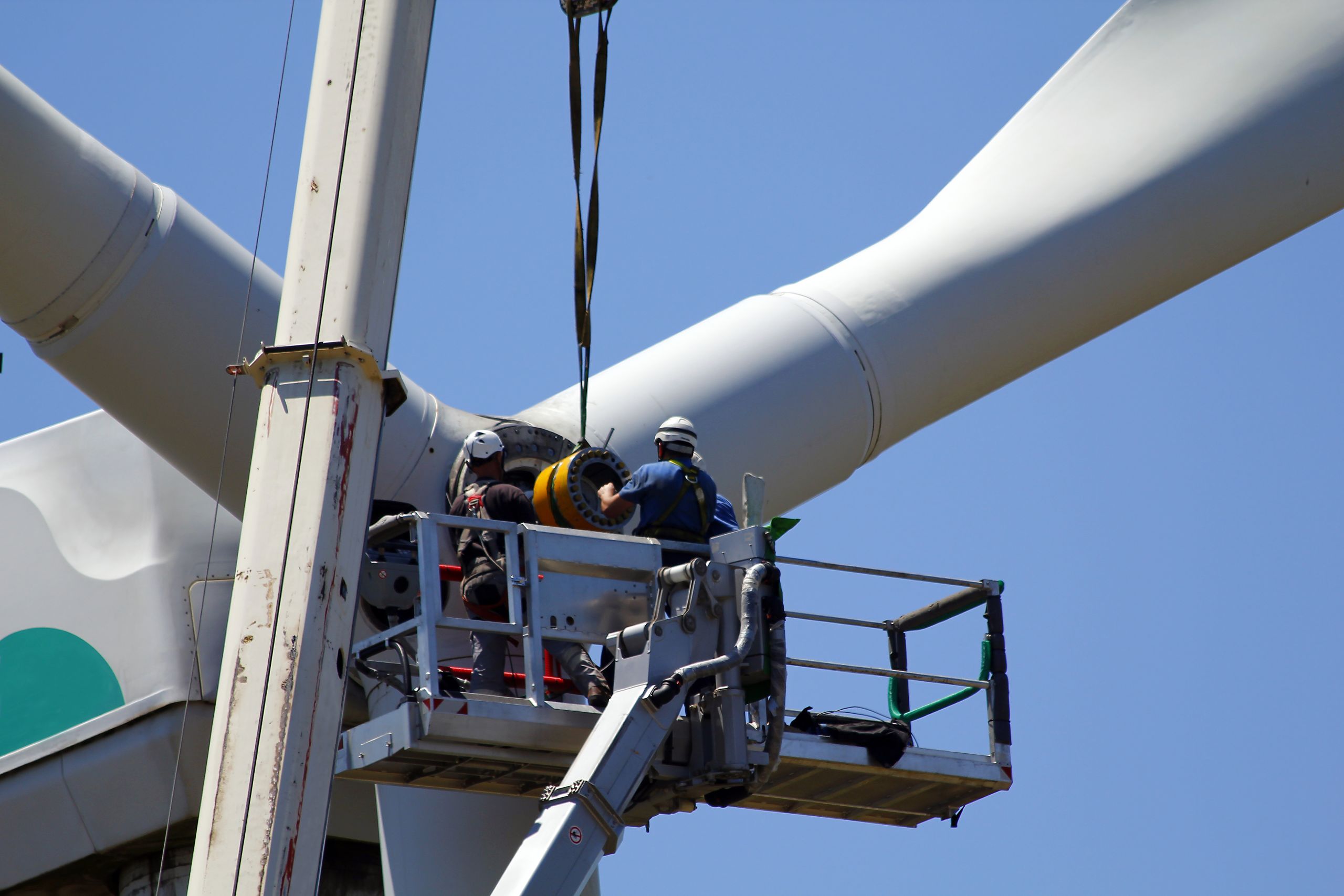
Can shipping emissions be kept in check in a post-COVID future?
- International shipping emits more carbon dioxide than Germany
- Ships used by the industry are likely to be in service for nearly 30 years
- From this current infrastructure, the sector’s ‘committed emissions’ are enough alone to exceed the Paris Climate Agreement’s 1.5 degrees goal.
- New research suggests that policy interventions on existing vessels could enable the shipping sector to meet the Paris targets, assuming that new vessels were also able to run on zero-carbon fuels from 2030.
Ships typically emit less carbon dioxide (CO2) per tonne of freight than lorries or planes. But the global impact of shipping is still huge: if it were a country, it would be the 6th highest emitter in the world. So what needs to be done?
New research from the Tyndall Centre explores this issue for shipping through the concept of “committed emissions”. Committed emissions are those emissions we can expect to see in years to come from existing infrastructure – in this case, existing ships that will continue to emit CO2 across their 30-year lifetime.
Our research considers ships travelling to and from the EU in 2018 – how much CO2 they are emitting, and how long they are likely to stay in service. The committed emissions just from these existing ships exceeds the amount of CO2 EU shipping is allowed to emit overall if it is to make a fair contribution to the Paris Climate Agreement’s goal to keep global warming below 1.5 degrees. Because ships have average lifetimes pushing three decades, it is existing ships, not new ships, that will be responsible for most of shipping’s future CO2 emissions. This is in contrast to the road transport sector, where there are shorter product lifetimes, and a much faster turn-over of the vehicle fleet.
But, there is hope. There are many ways in which emissions from existing ships can be cut: slower speeds, fitting modern sails, using green electricity when in port, retrofitting vessels to be more energy efficient, greater use of hybrid vessels using batteries, and retrofitting vessels to use zero-carbon fuels such as ammonia and hydrogen.
Our research shows that if new vessels are able to run on zero-carbon fuels from 2030, then a strong suite of policies targeting existing vessels – on speed, operational efficiencies, blended fuels and zero-carbon fuel retrofits – could keep shipping’s emissions within the Paris Agreement’s 1.5 degree carbon budget. But only if this action to retrofit the fleet happens quickly.
What needs to happen next?
First, the International Maritime Organisations (IMO) current target of at least 50% cuts in greenhouse gas emissions by 2050 needs to be significantly tightened to be compatible with the Paris 1.5 degrees goal. Our research indicates that keeping within 1.5 carbon budgets would need shipping CO2 emissions to fall to net-zero by 2040.
Second, the IMO’s policy focus is predominantly on measures for new ships, such as the Energy Efficiency Design Index (EEDI) energy efficiency policy, which sets emission levels per tonne km for new ships. While this and at-scale deployment of zero-emission fuels and ships by 2030 are both essential, it is critical that the IMO focusses on measures that cut emissions from existing ships as well, as existing ships will produce the bulk of future emissions. “Slow steaming” is one of the best short-term measures to cut energy use and emissions; ship operators still widely practice this since the financial crash, to cut fuel costs. This has cut the CO2 intensity of ships by 30% since 2008. Further savings are possible still but require some form of international policy mechanism. One problem is that progress at the IMO is mired in complex wrangles over policy design, with reluctance to make any measure mandatory. Breaking the international impasse on progress on slower-speeds is a priority.
Third, the research shows wide variety in the lifetimes and committed emissions profiles of different classes of ships, implying that targeted policies are needed. Refrigerated cargo ships have an average of 9 years likely future life, whereas for passenger ships it is 29 years. For ships and ship types with shorter remaining life, it’s hard for ship-owners to make a strong economic case for actions on their own, so the successful uptake of emission reduction measures requires action from policy makers, such as regulating on speed, setting standards on retro-fitting to improve efficiency, or market-based mechanisms that impact on fuel price.
Efficiency improvements on new ships won’t be enough
The committed emissions from ships are significant, yet a combination of policies on very low-carbon ships from 2030, combined with speed and operational measures from the early 2020s, could keep shipping within a Paris-compatible carbon budget. However, any delay to appropriate policy implementation would mean additional measures, including demand-side or early scrappage interventions, are needed to meet the Paris climate goals.
The time left to deliver on what is dictated by the global Paris Agreement is too short to rely on measures that predominantly focus on improving the efficiency of new ships. Policy makers should include a focus on measures that clearly target the existing fleet.
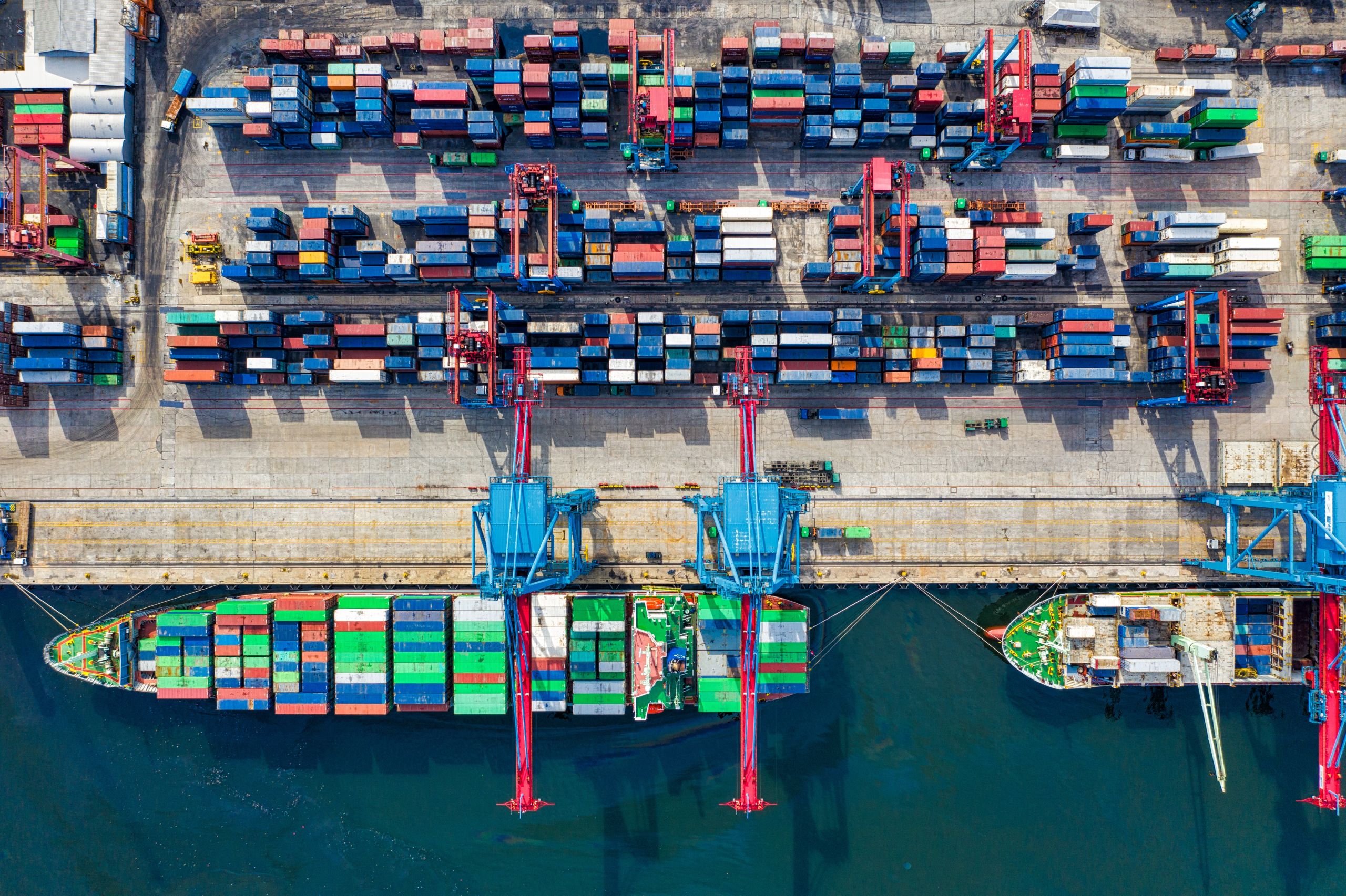

Is the shipping sector on a collision course on climate?
Simon Bullock and Professor Alice Larkin, the Tyndall Centre Manchester
November 2021
In the run-up to the COP26 climate summit in Glasgow, United Nations Secretary General Antonio Guterres has strongly criticised the International Maritime Organisation (IMO) for not doing enough to cut carbon emissions from the shipping sector. He said the sector’s current commitments were consistent with global warming above 3 degrees, whereas the Paris Agreement sets a 1.5 degree goal. In this blog, Simon Bullock and Professor Alice Larkin outline new research setting out what shipping needs to do to play its part in meeting the Paris climate goals.
- Current IMO targets see no emissions reductions for the sector before 2030, and would lead to shipping emitting more than double the emissions compatible with limiting global heating to 1.5 degrees.
- Paris-compliant targets require a 34% reduction for international shipping by 2030, and zero emissions before 2050.
- The longer the delay in setting new targets, the steeper subsequent decarbonisation trajectories become. Delay beyond 2023 would mean the transition becomes unfeasibly rapid.
- New targets and policies for rapid decarbonisation need to be in place by the IMO’s planned strategy revision in 2023; the groundwork for this needs to start at the big IMO “MEPC77” meeting this November.
- Nations at COP26 should commit that they will press for tougher and Paris-compatible targets for international shipping.
COP26 is underway and countries are being asked to bring more ambitious climate targets for 2030, called Nationally Determined Contributions (NDCs), to bring the world on track to limit global heating to 1.5 degrees.
Such NDCs do not usually include emissions from international aviation and shipping; these sectors’ emissions have historically been seen as the responsibility of UN agencies; the International Civil Aviation Organisation and the International Maritime Organisation (IMO).
These sectors are crucially important. International shipping alone has emissions the size of Germany, but progress in cutting emissions is very slow. UN Secretary General Antonio Guterres said last month that the sectors’ climate change commitments are consistent with warming above three degrees and the shipping sector’s targets will see no emissions reduction by 2030. These sectors are increasingly becoming the global laggards on climate action.
So what should international shipping do? New research from Tyndall Manchester published last week in Climate Policy sets out the scale of the challenge, and implications for policy makers.
The research calculates the cumulative carbon dioxide emissions international shipping can emit in the future compatible with the Paris 1.5 degree warming target, thus creating a “carbon budget” for the sector. The research then sets out possible pathways compatible with that carbon budget.
The main implication of pathways to meet carbon budgets is the issue of delay. If we delay, more of any given budget is taken in the early years, which means that when we do start to cut emissions, the trajectory to zero has to be steeper, as less of the budget remains. This is a particularly important issue for shipping, because rapid transitions are very unlikely to be feasible. Ships are long-lived, the turn-over of the fleet is slow, alternative fuel infrastructure takes time to build. So there’s a limit to how steep a trajectory we can take and this narrows the range of potential pathways for shipping.
The IMO’s targets and Paris-compatible 1.5°C pathways
The research assesses these pathways, and has three main conclusions.
Firstly, the IMO’s current targets for 2030 and 2050 are far too lax. Their cumulative emissions are over double what is Paris-compatible. The IMO has a strategy revision planned for 2023 – the groundwork to get new targets and policies in place by then needs to start now: via signals from nations at COP26, and then preparatory work at the big IMO “MEPC77” meeting at the end of November.
Secondly, emissions reduction needs to start no later than 2023, to avoid untenably rapid transition rates. Even this requires a full transition to zero emissions in just 25 years – less than an average ship’s lifetime. A 2030 target of 34% cuts, with zero emissions before 2050 would be Paris-compatible.
Thirdly, although the zero emission end date is also important, the most critical issue is ensuring substantial emissions reduction this decade. Policies now for developing new zero emission fuels and their infrastructure are crucial, but they will only deliver substantial carbon savings in the 2030s. Far greater action is therefore needed on operational measures to cut pollution from the existing shipping fleet in the 2020s. This includes slower speeds, wind-assisted propulsion, shore-power infrastructure and stronger energy efficiency policies. Previous Tyndall Manchester research shows that this combination of strong action on existing ships this decade, with scale-up of alternative fuels in the 2030s, can still see shipping play its part in meeting the Paris 1.5 degree goal.
The pressure on the IMO to take greater action is increasing from many directions. During a virtual meeting of the G7 in May 2021 a communiqué was published calling for strengthened IMO ambition. The USA, UK, EU, Norway, Iceland, Costa Rica and Kiribati have also all submitted documents with zero emission proposals to the November IMO MEPC77 meeting.
There has also been a call from Industry for the IMO to do more. The International Chamber of Shipping has called for net zero emissions by 2050, as well as 190 industry organisations and leaders coming together to sign a “call for action” urging Governments to commit to decarbonising shipping by 2050 and with companies such as Amazon and Ikea also committing to only using zero-emission ships by 2040 the pressure is mounting.
But the results of our new research are clear, this pressure needs to be translated into actual movement from the IMO now. New targets, and policies to meet them, cannot wait.
The 2010s have been a wasted decade with no meaningful emissions reduction in shipping. We cannot afford another. This is the last chance saloon for the IMO – it has to act now to address the stark gap between its current targets and what is needed to be Paris-compliant.
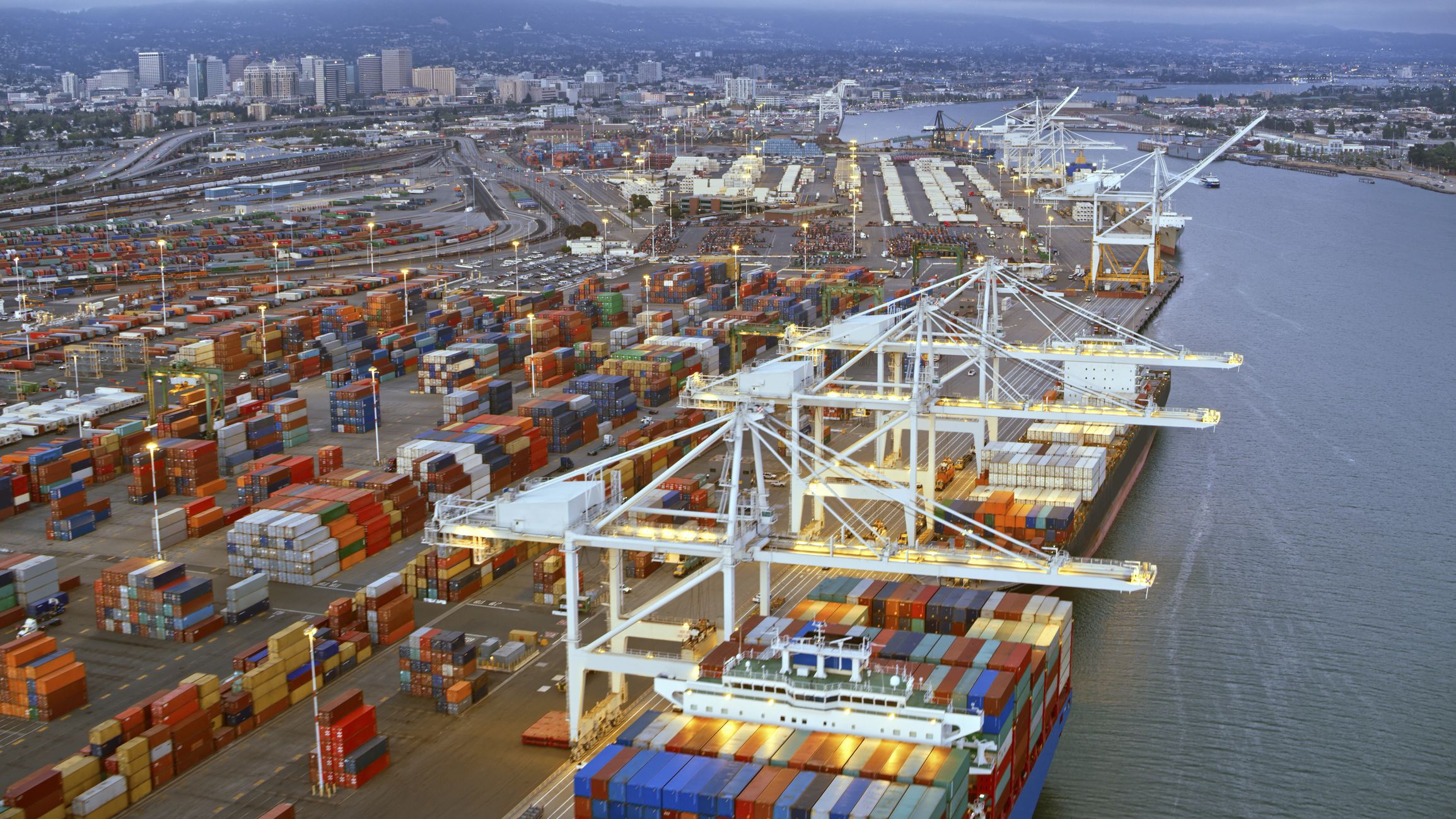


Policy@Manchester aims to impact lives globally, nationally and locally through influencing and challenging policymakers with robust research-informed evidence and ideas. Visit our website to find out more, and sign up to our newsletter to keep up to date with our latest news.
Energy is one of The University of Manchester’s research beacons. Our energy and climate change researchers are at the forefront of the energy transition, collaborating with governments, businesses and institutions to develop innovative, real world solutions to drive a green recovery and help achieve next zero. As the UK prepares to host the COP26 climate summit, read our collection of blogs on climate change for more evidence-based policy solutions.
Policy@Manchester, 2021
Twitter: @UoMPolicy
LinkedIn: Policy@Manchester
Email: policy@manchester.ac.uk
